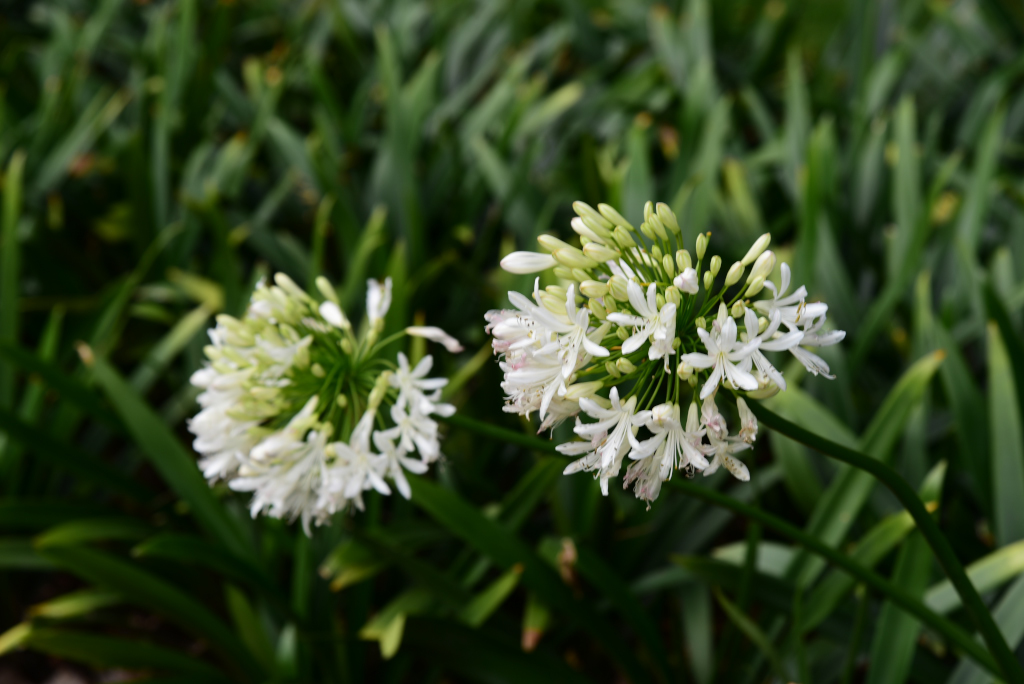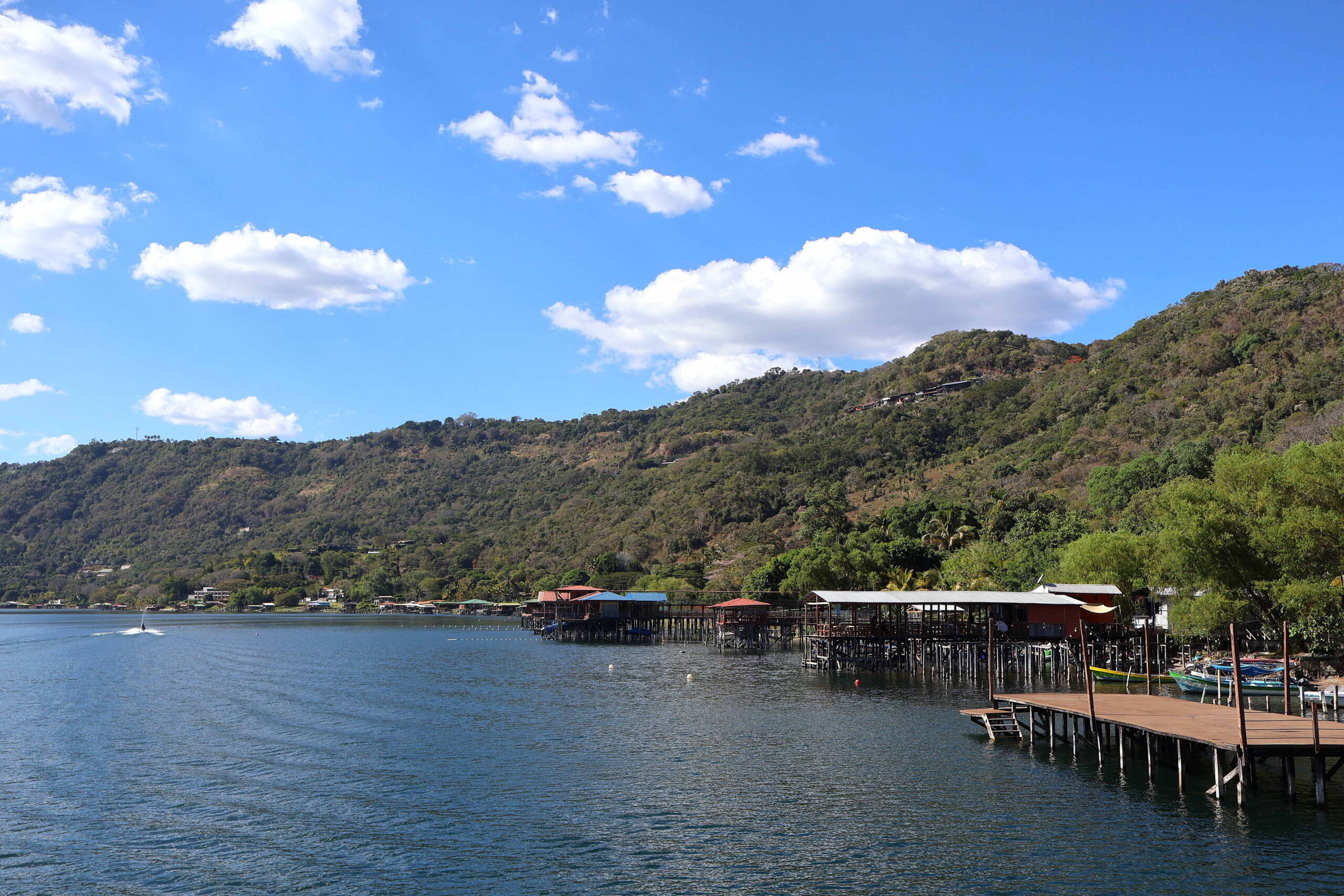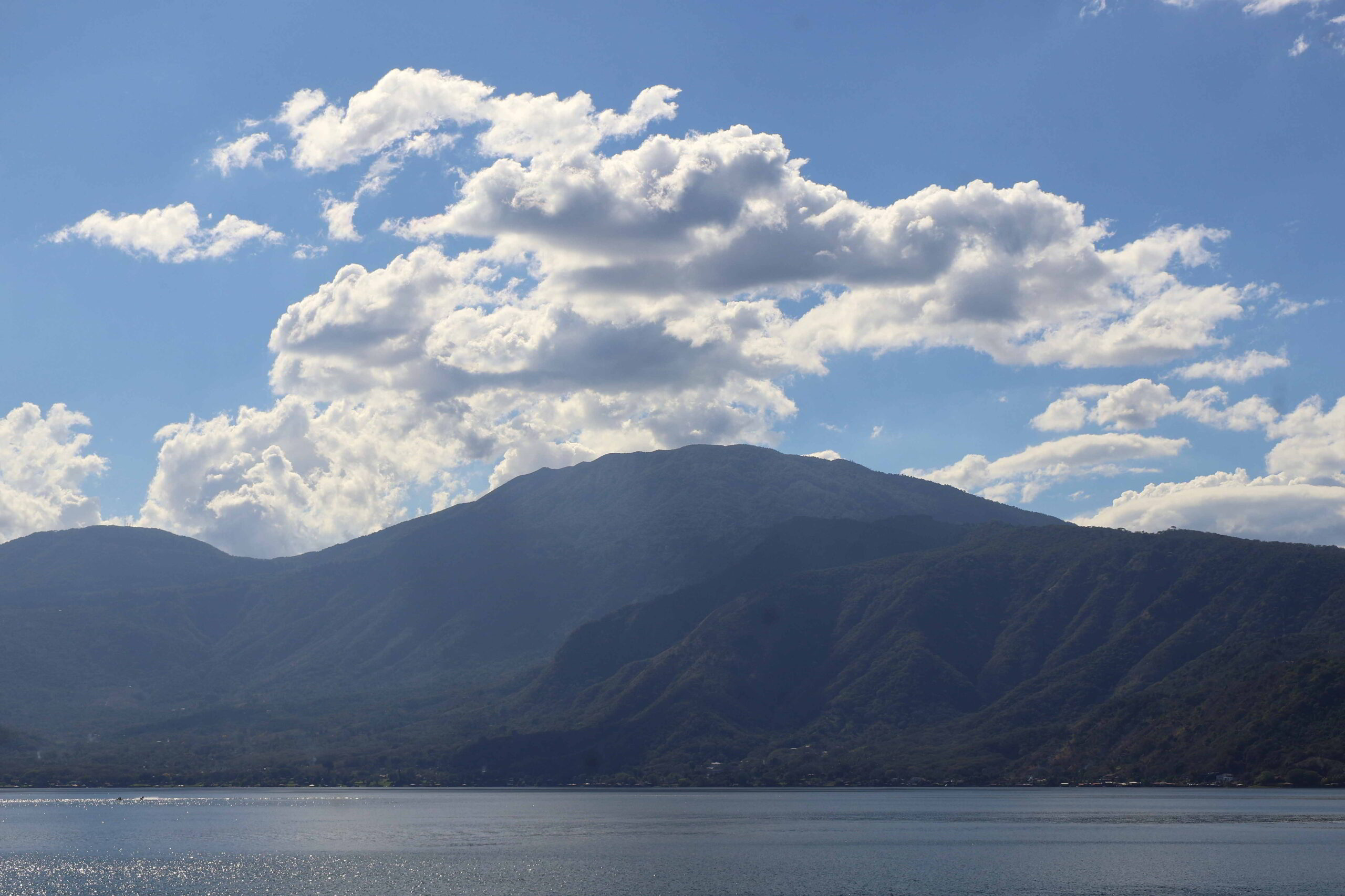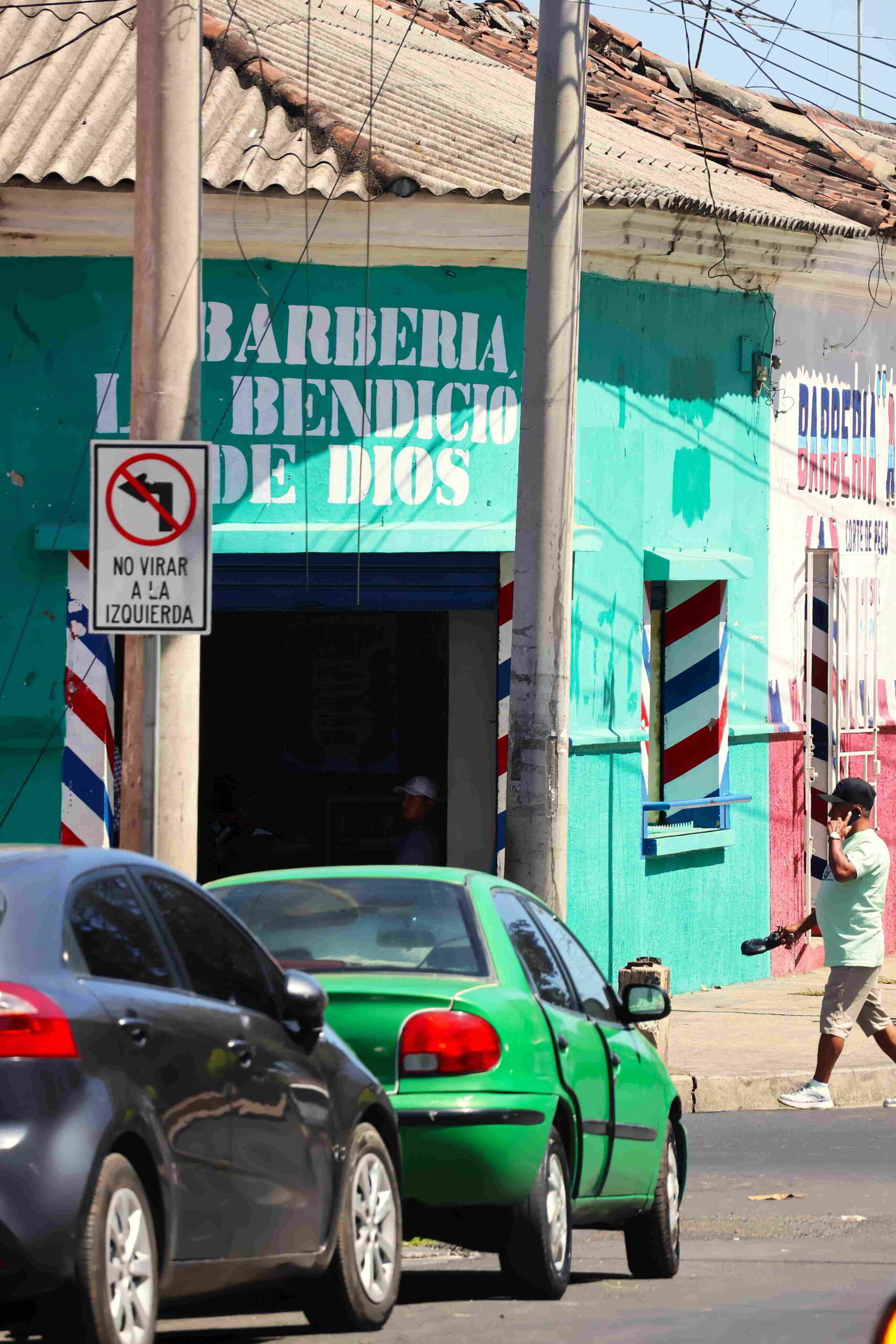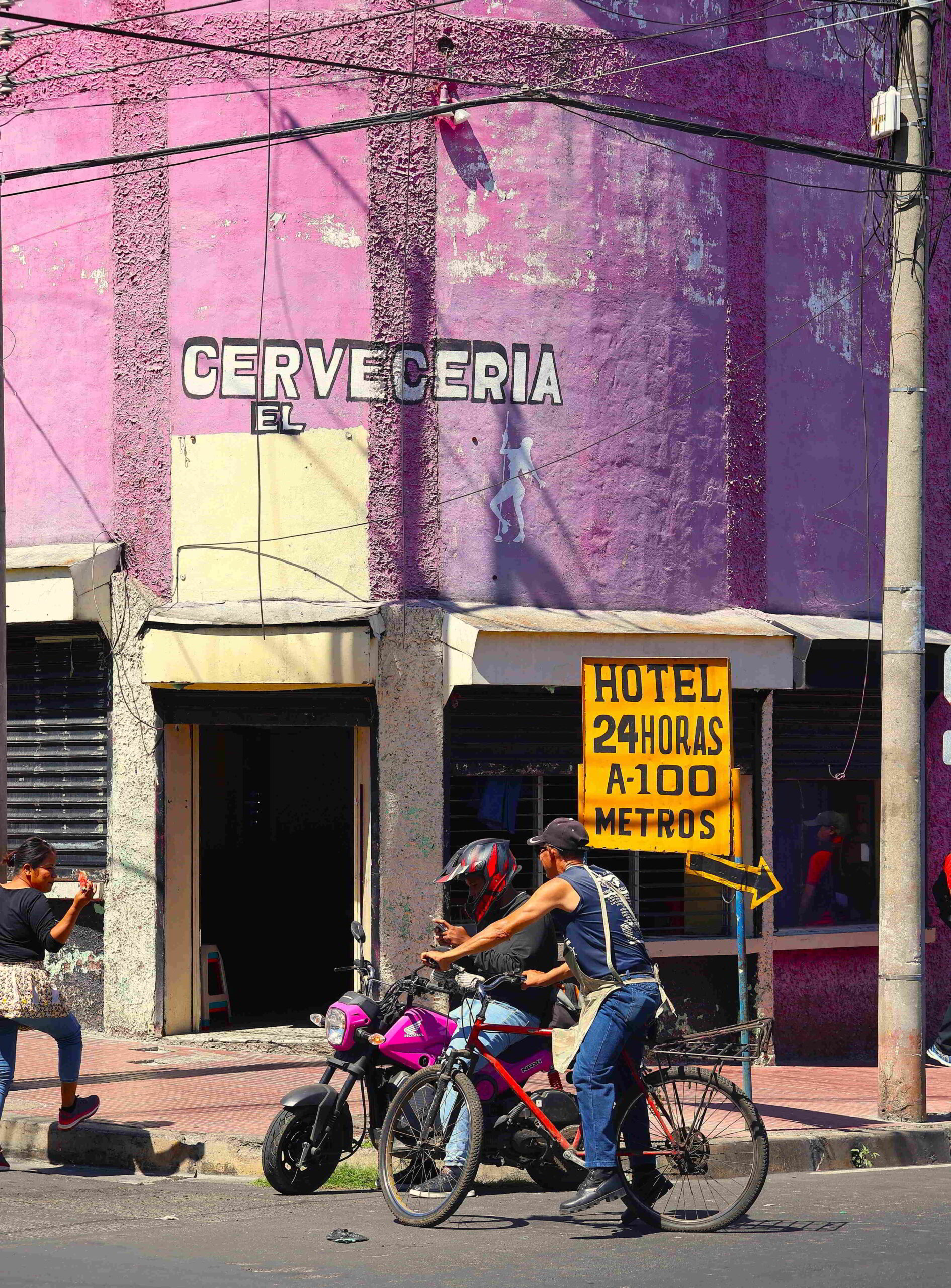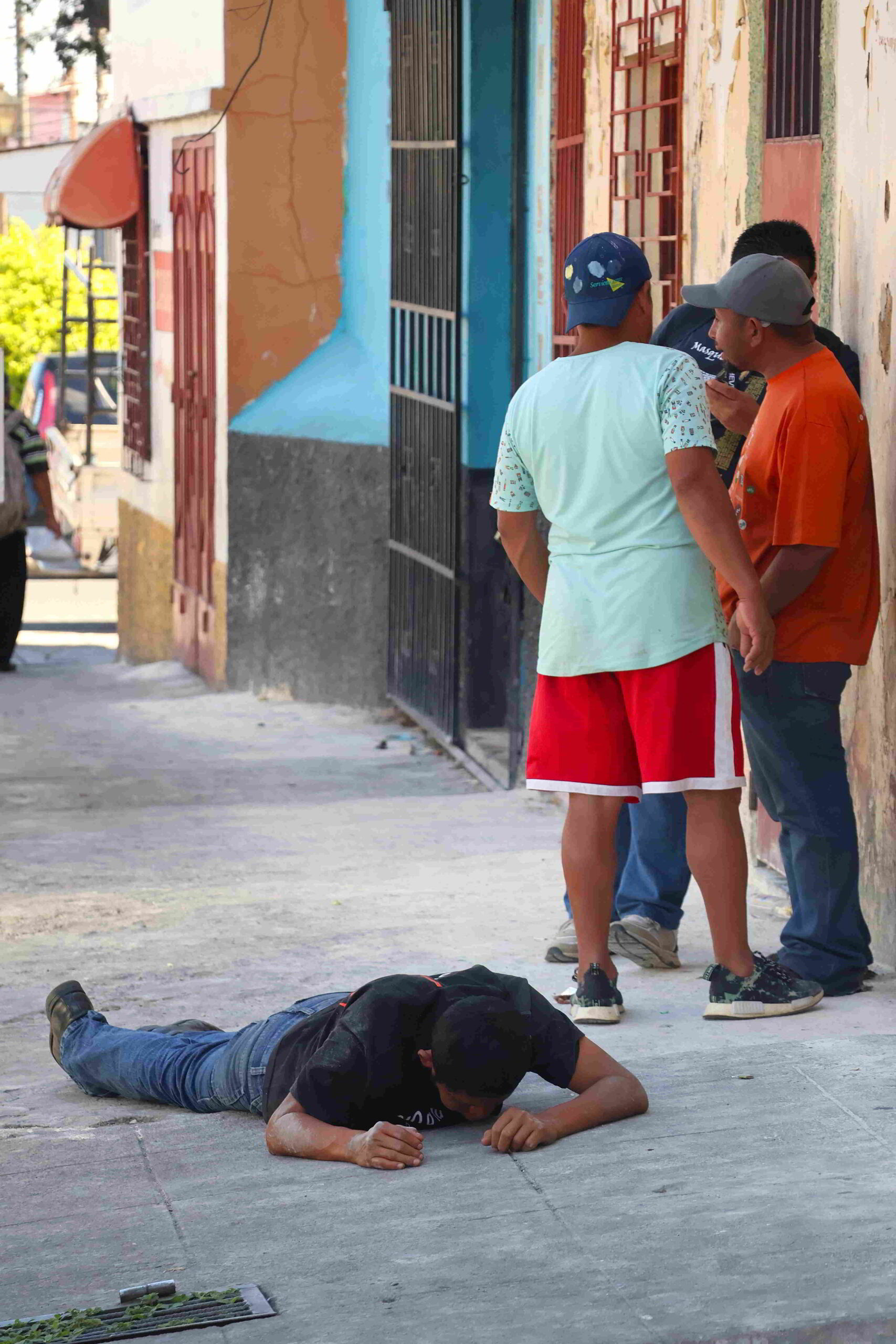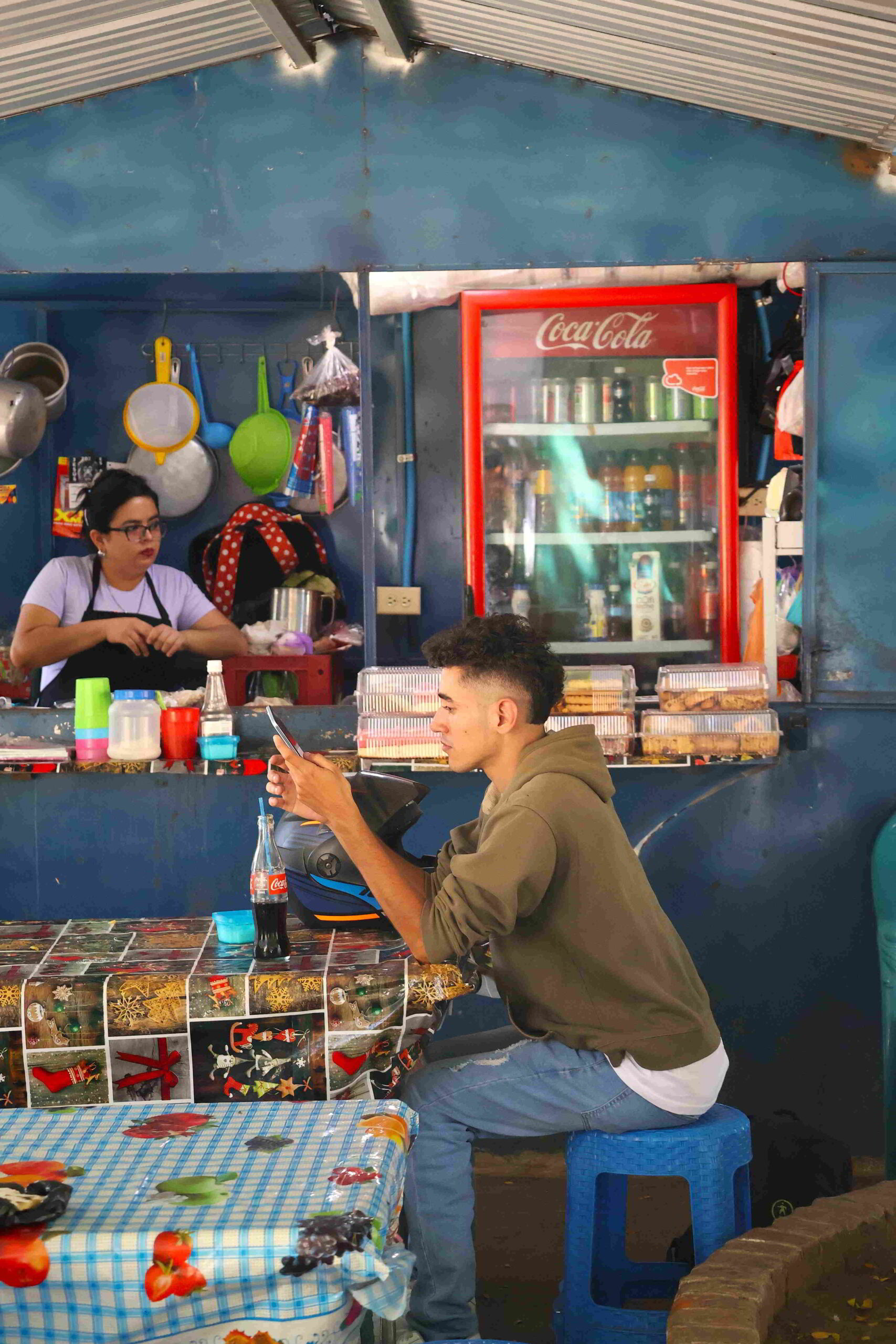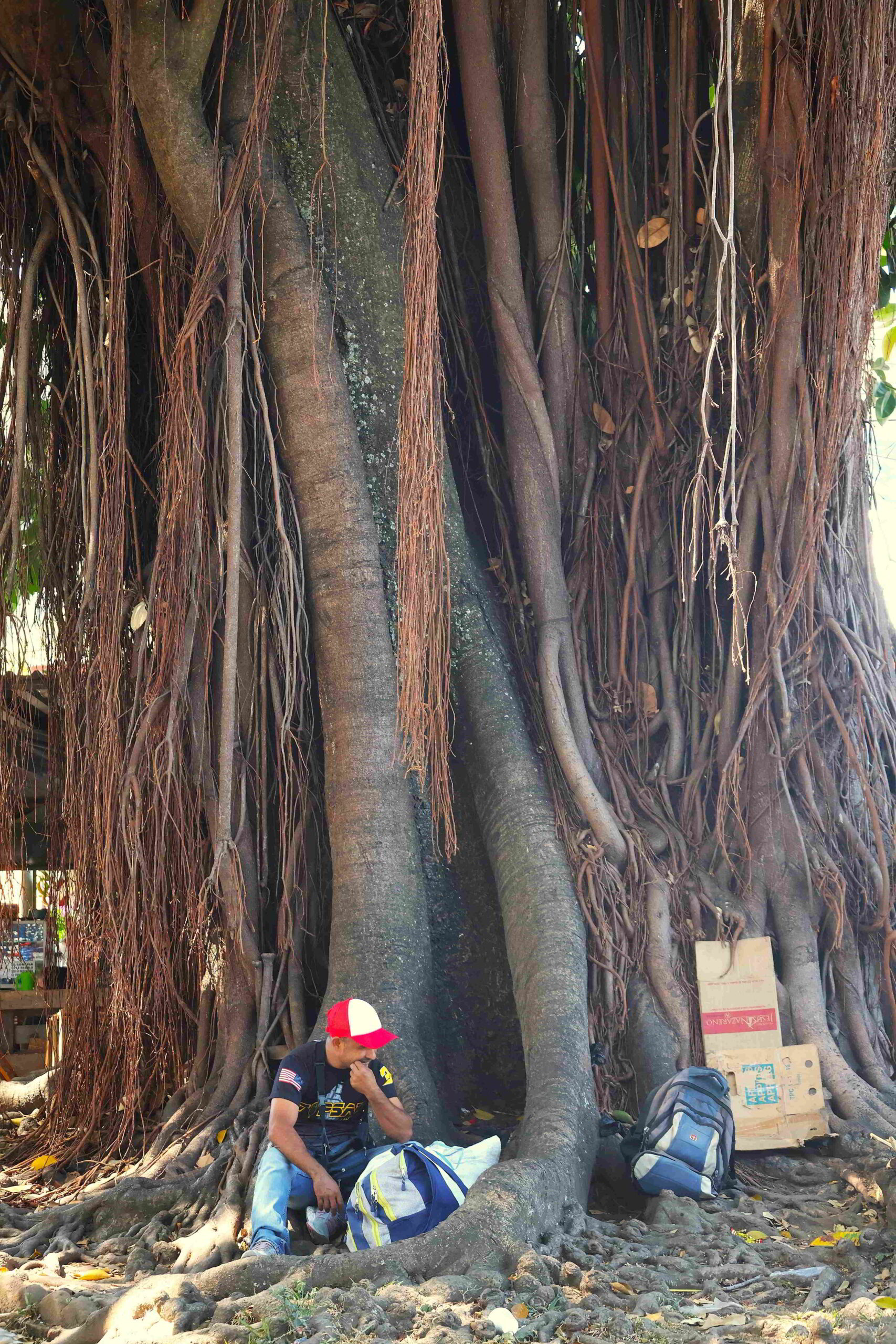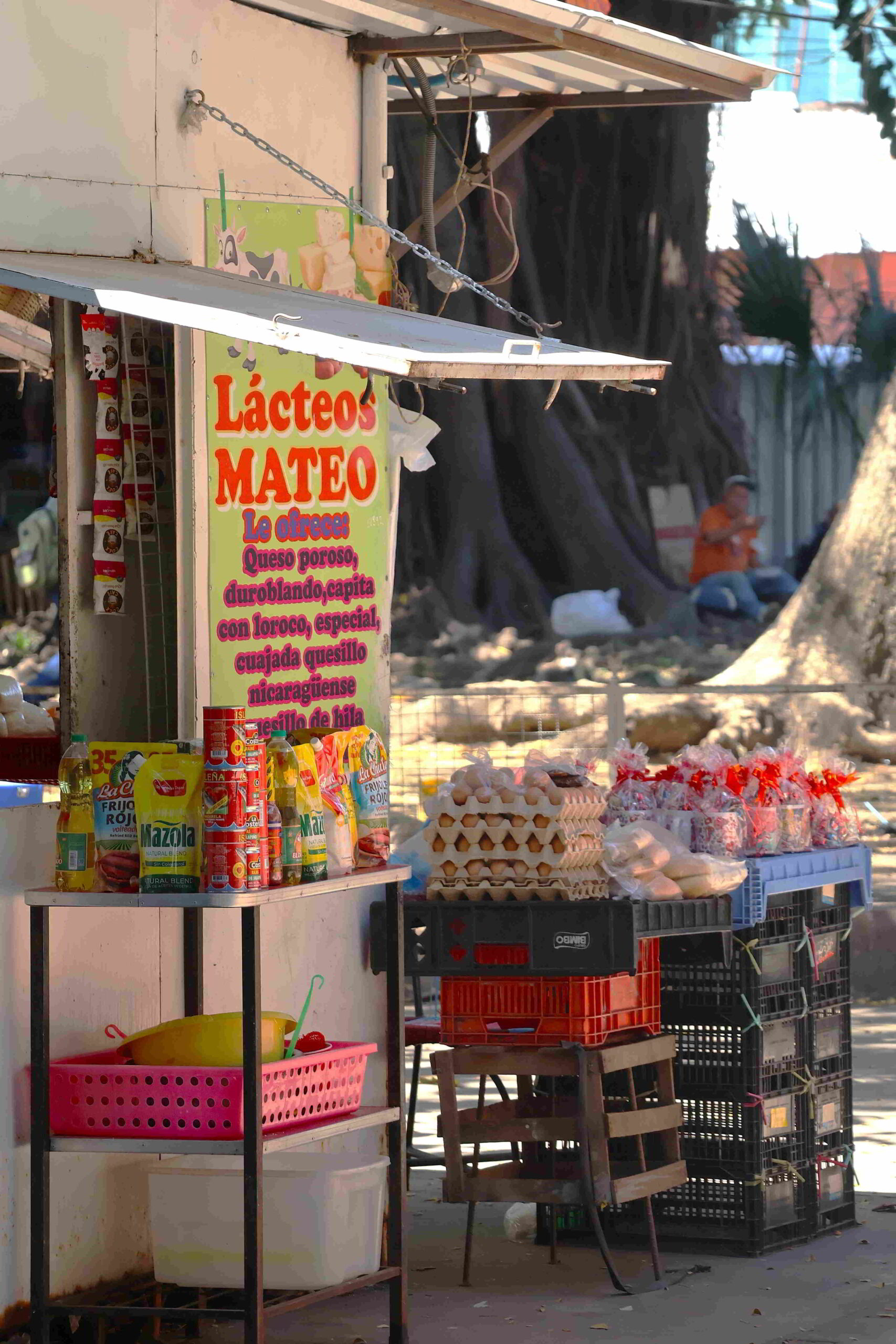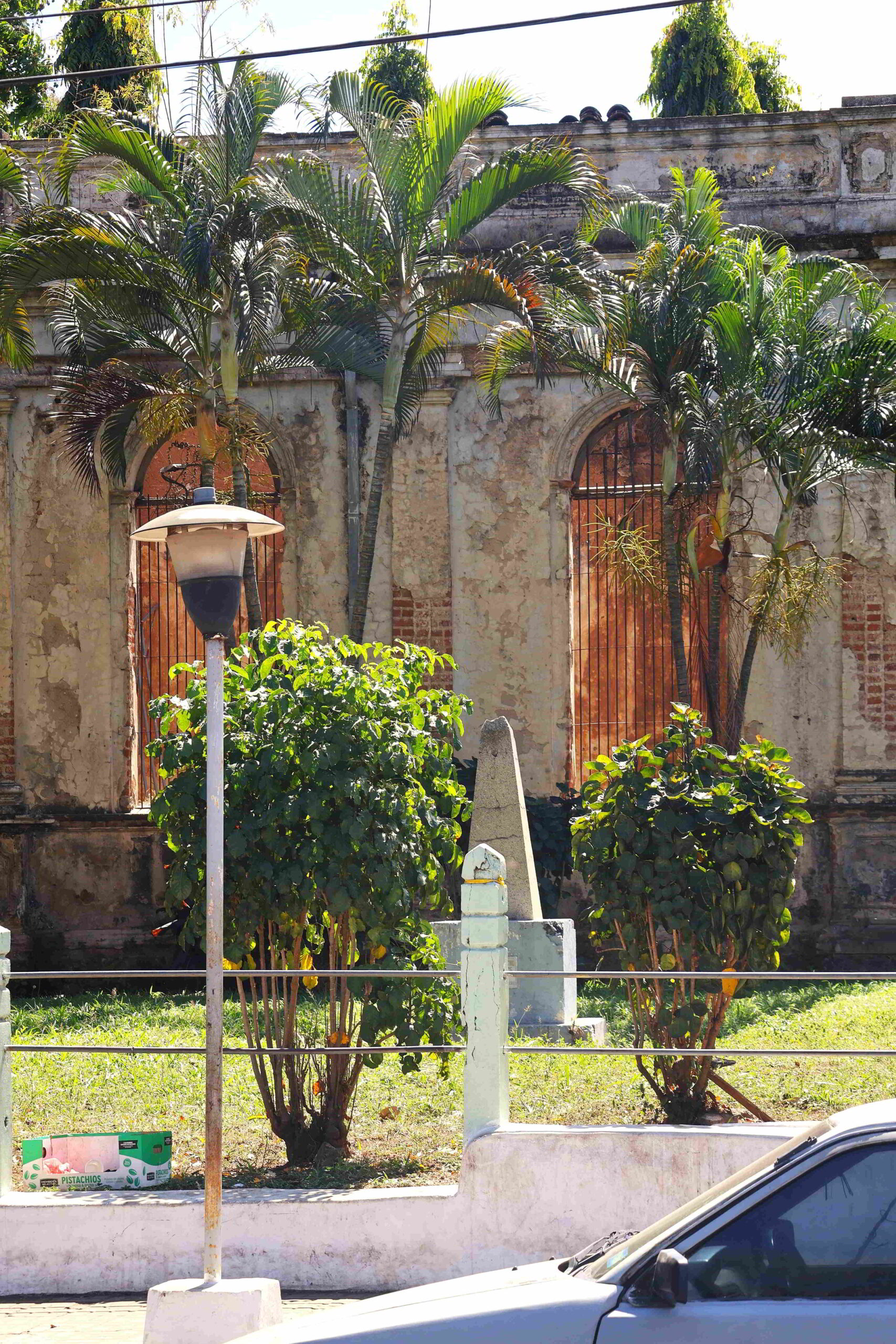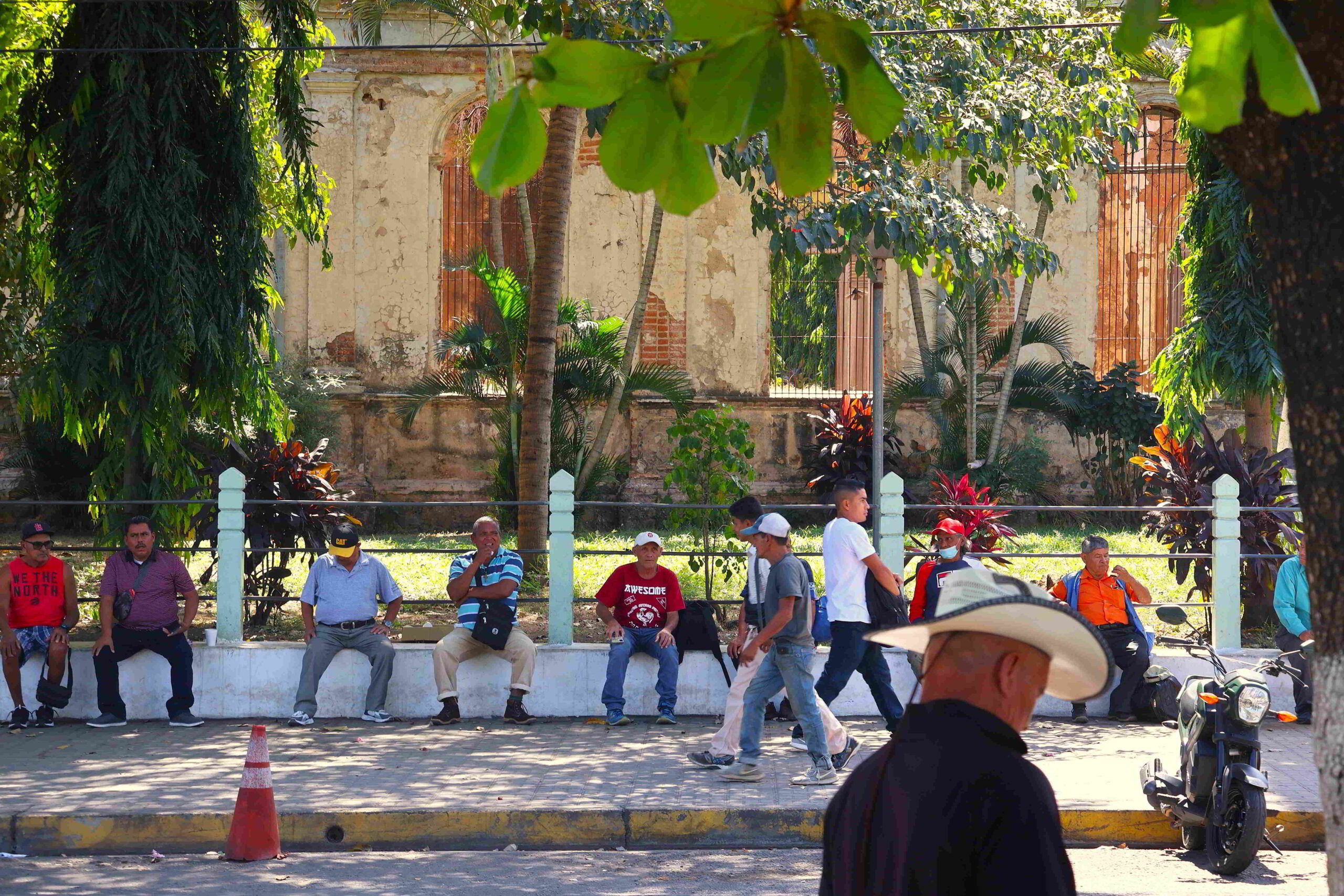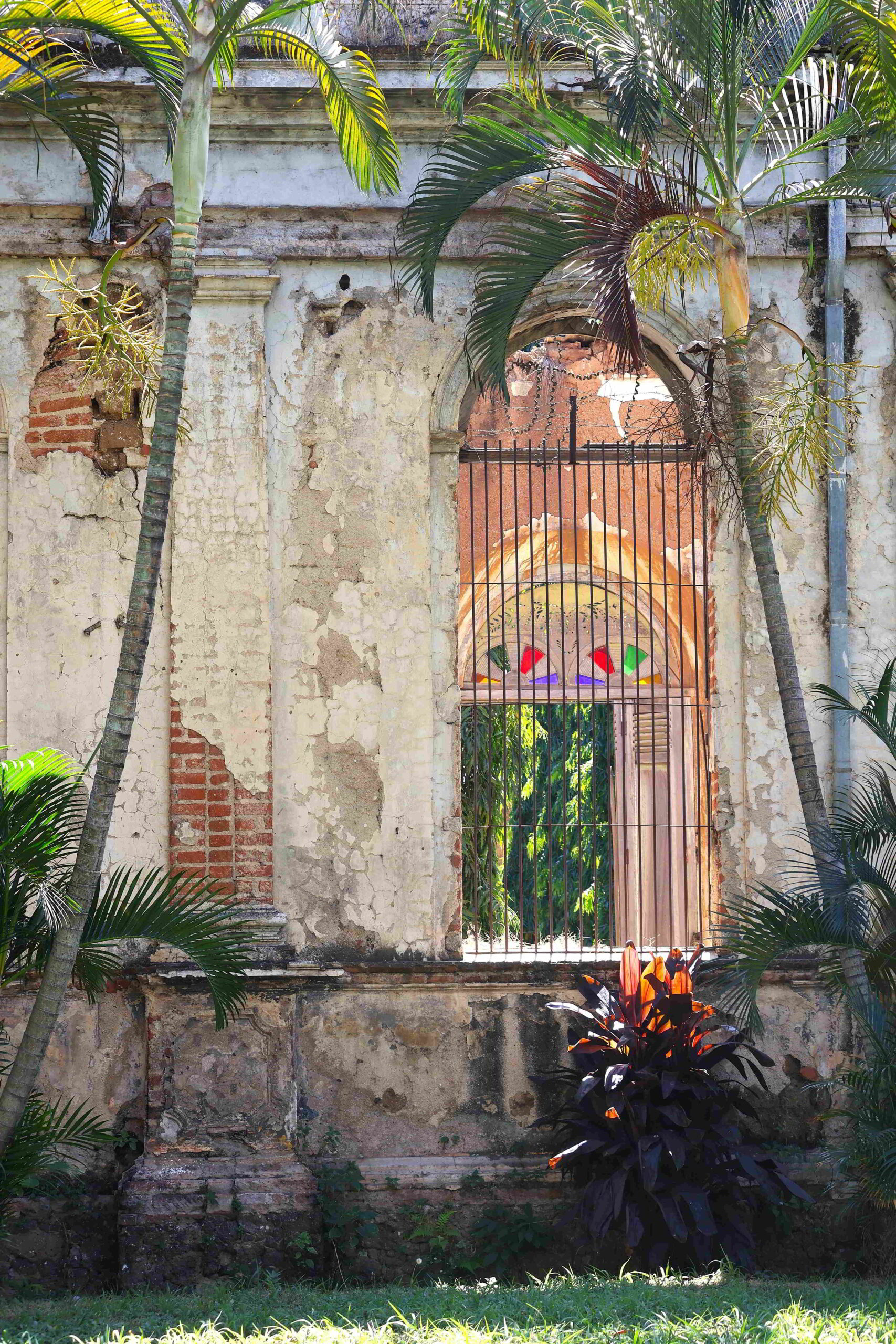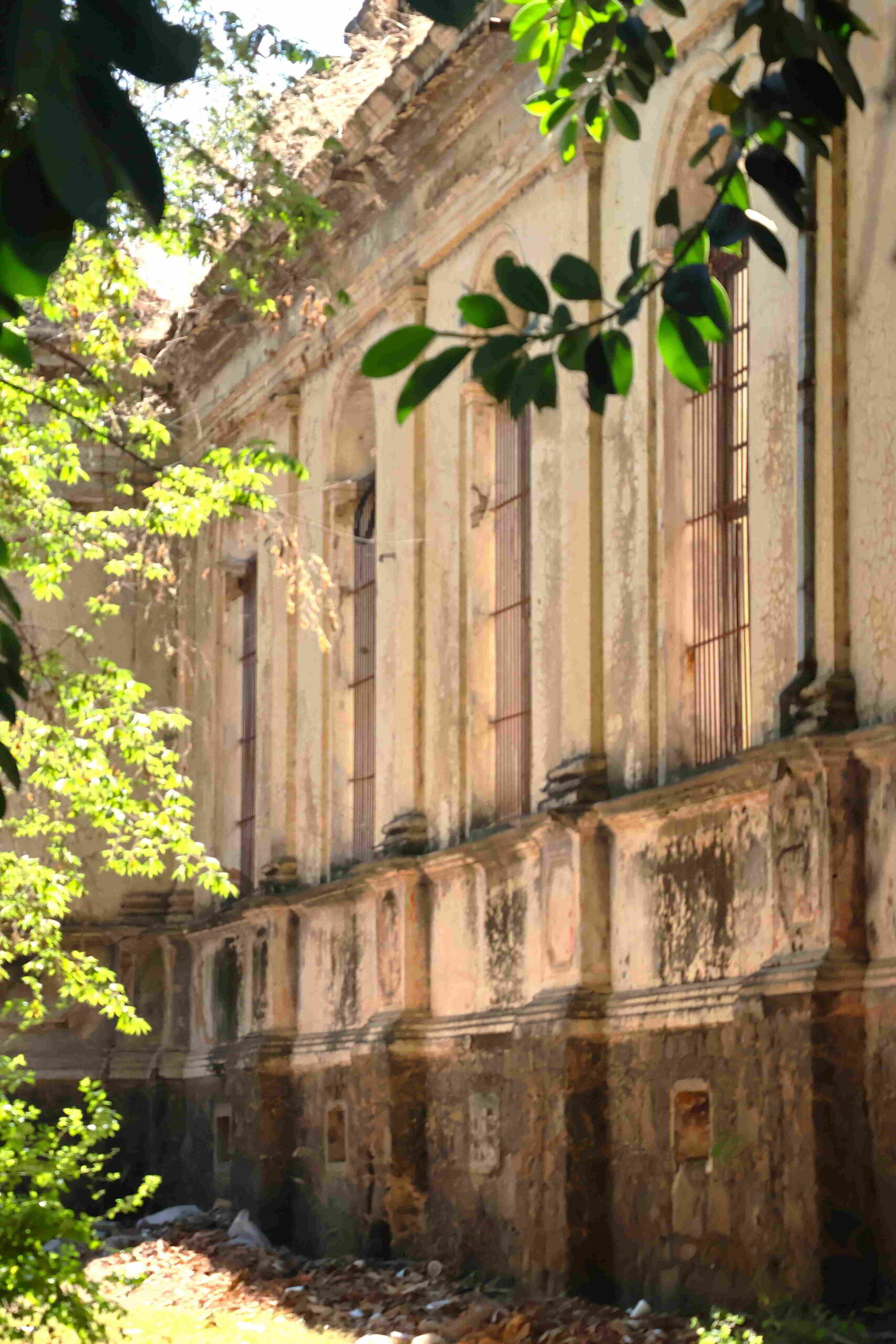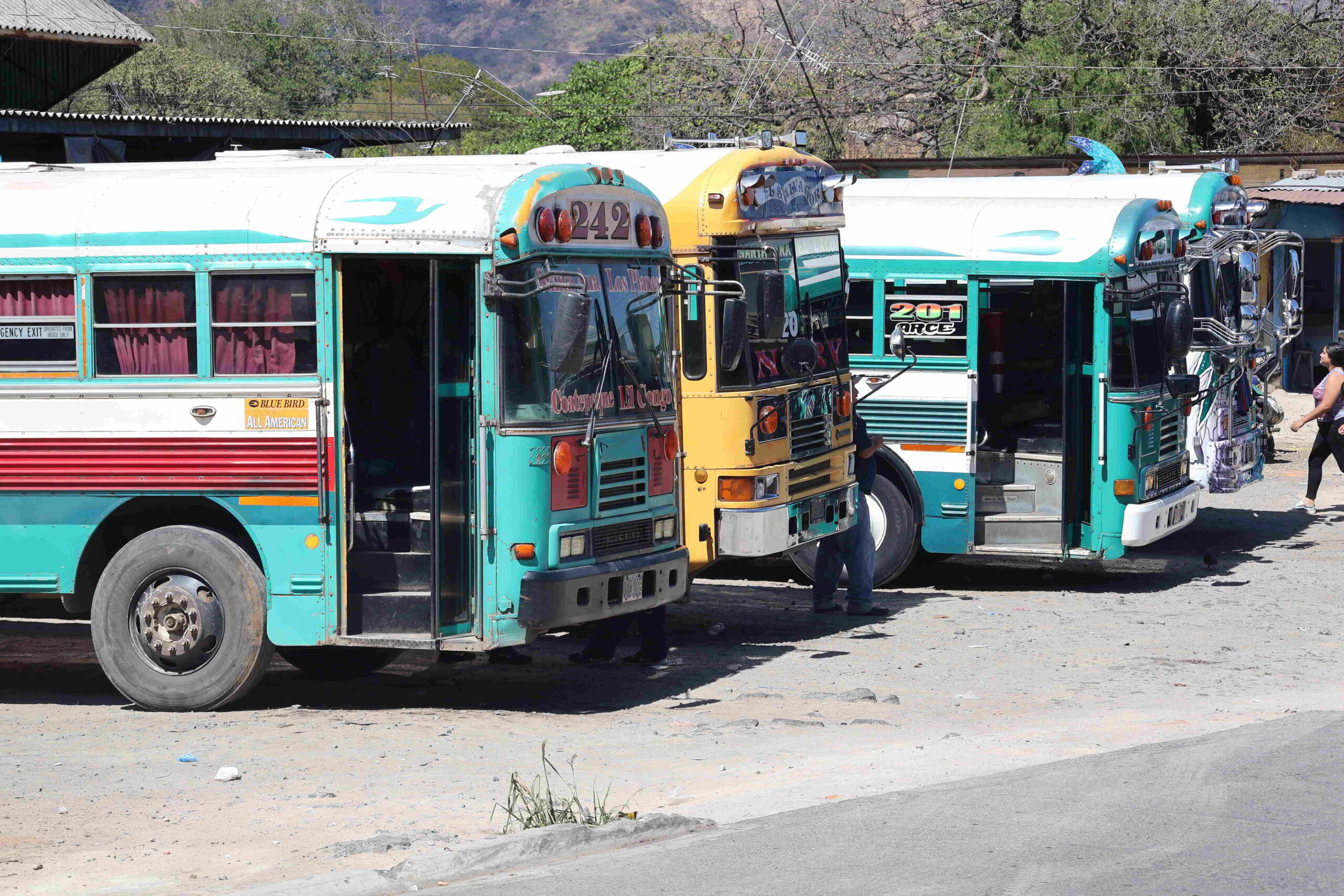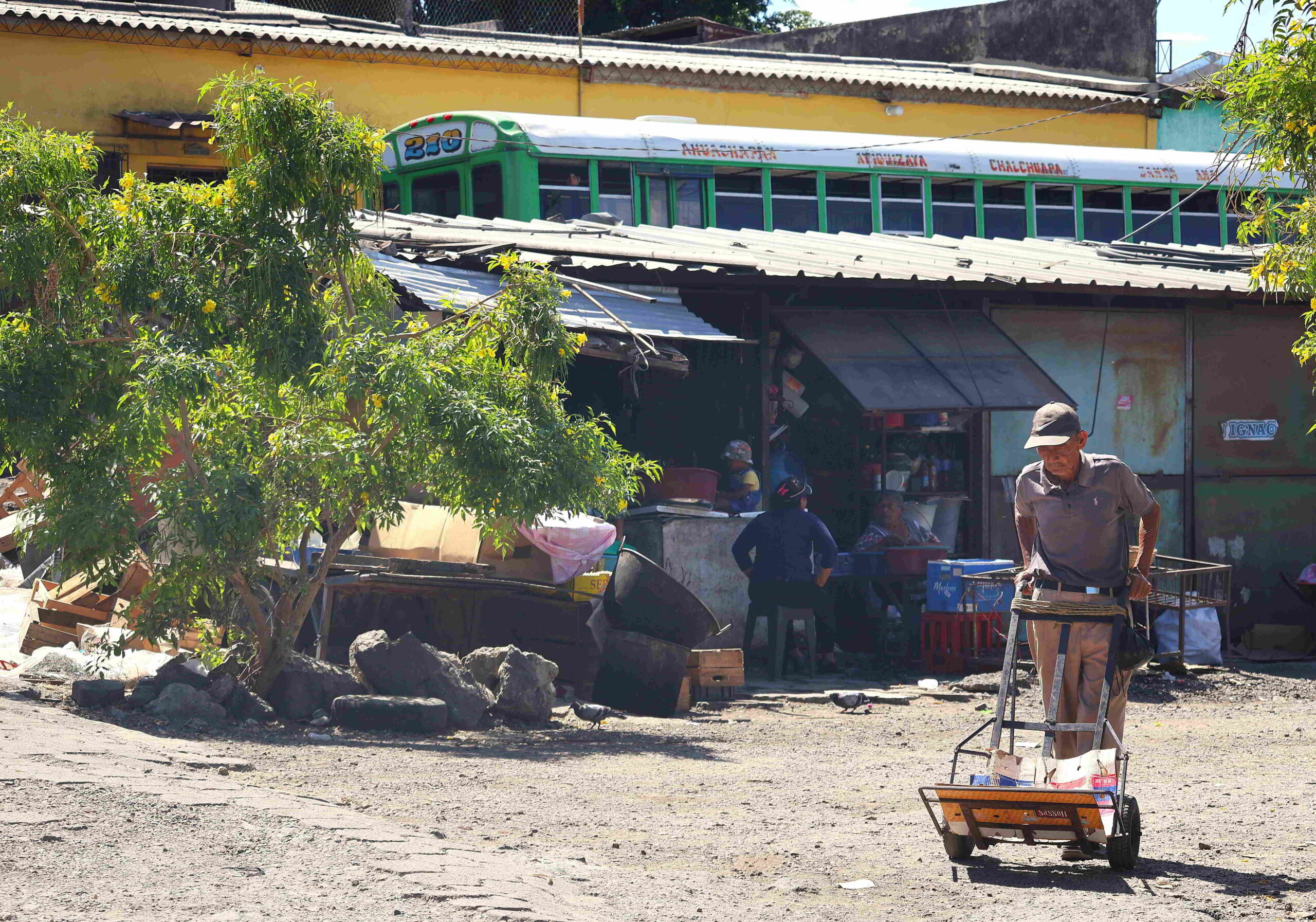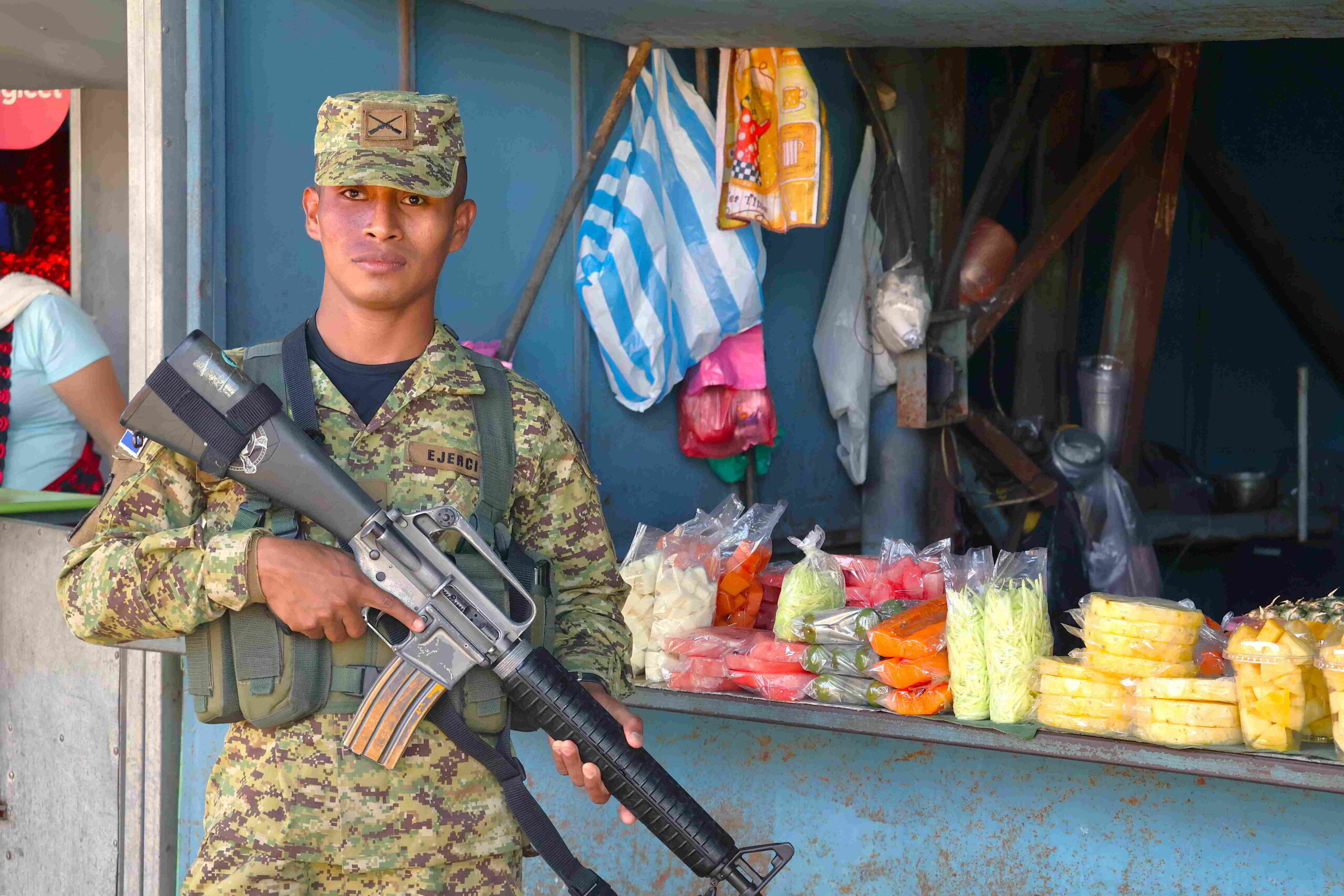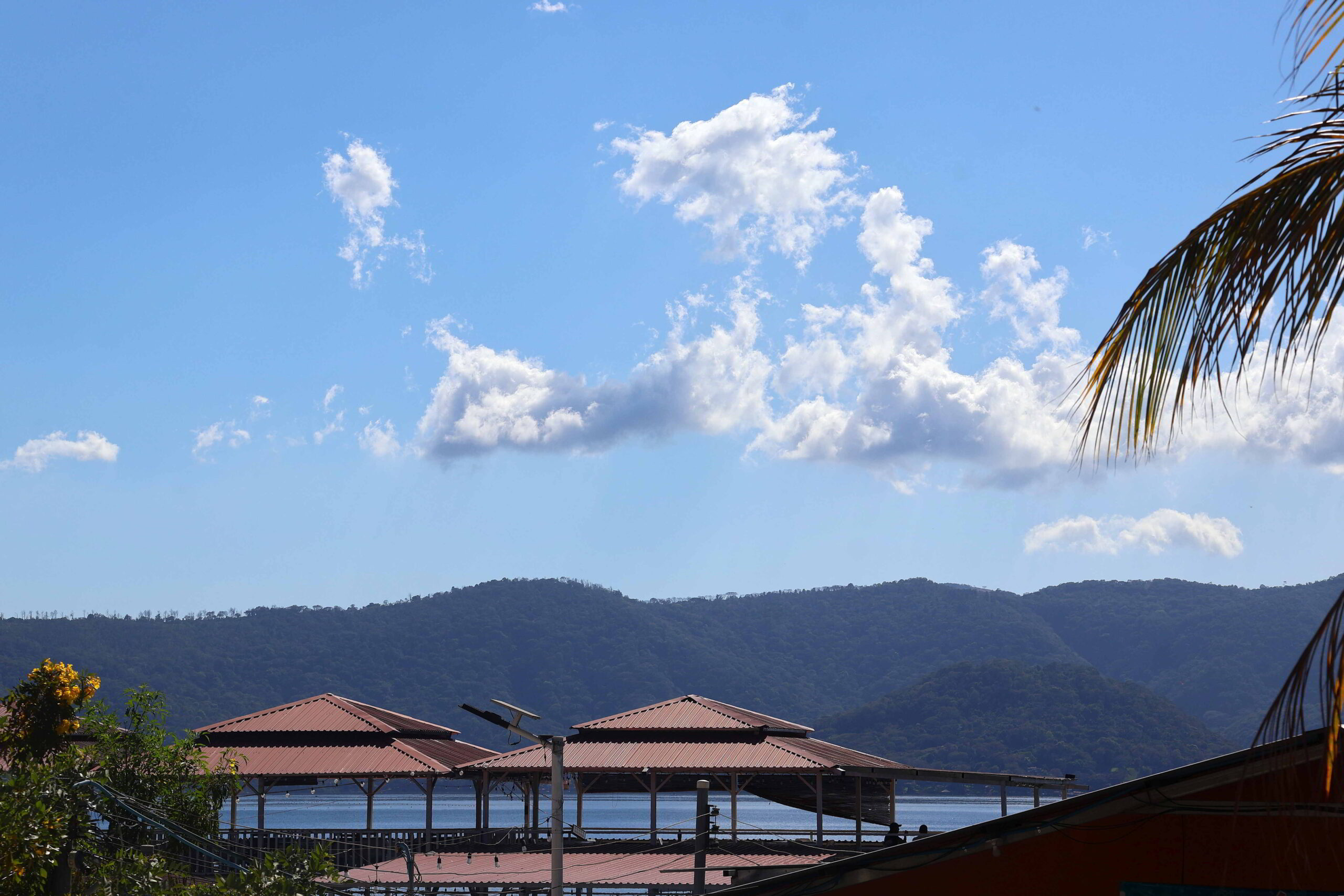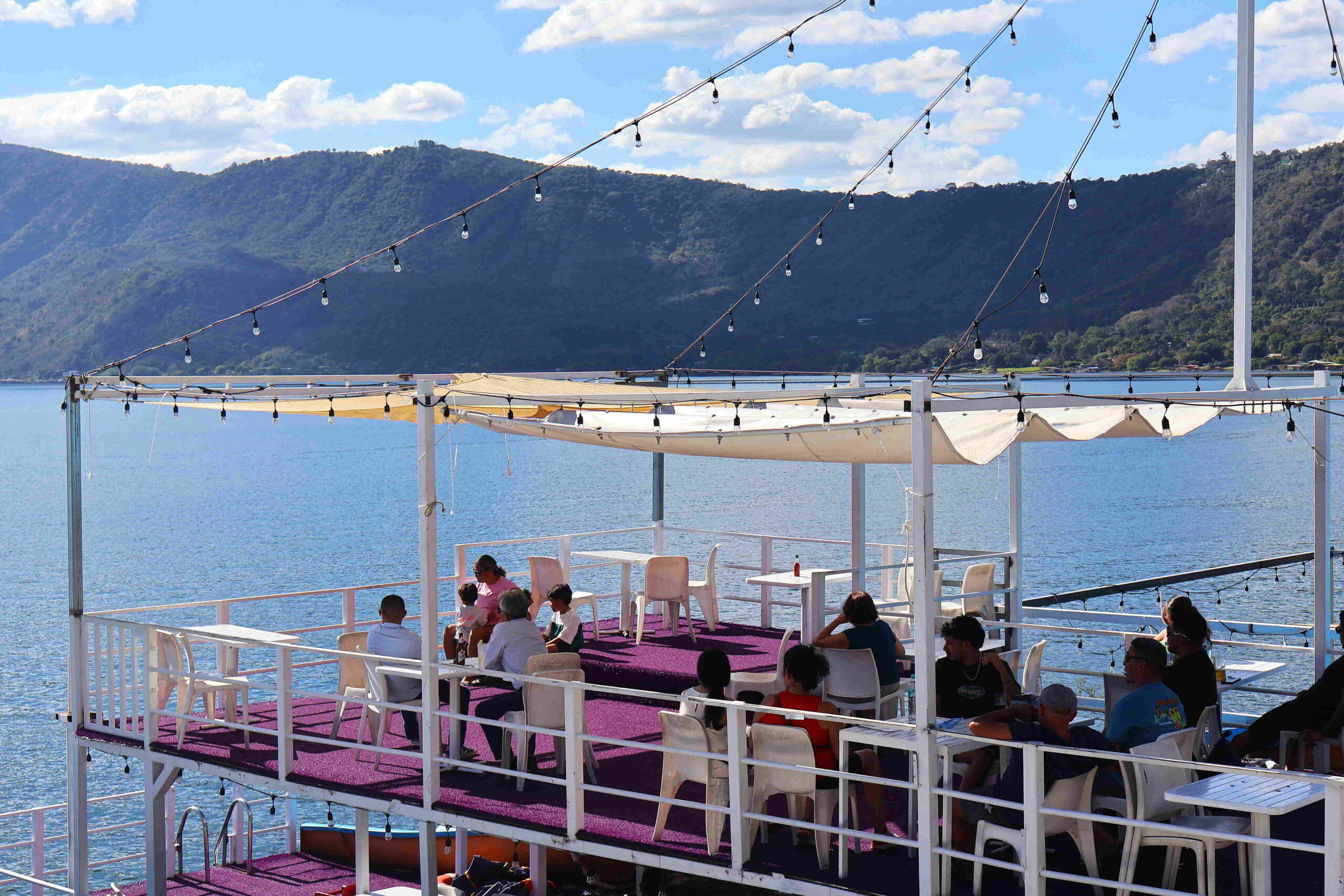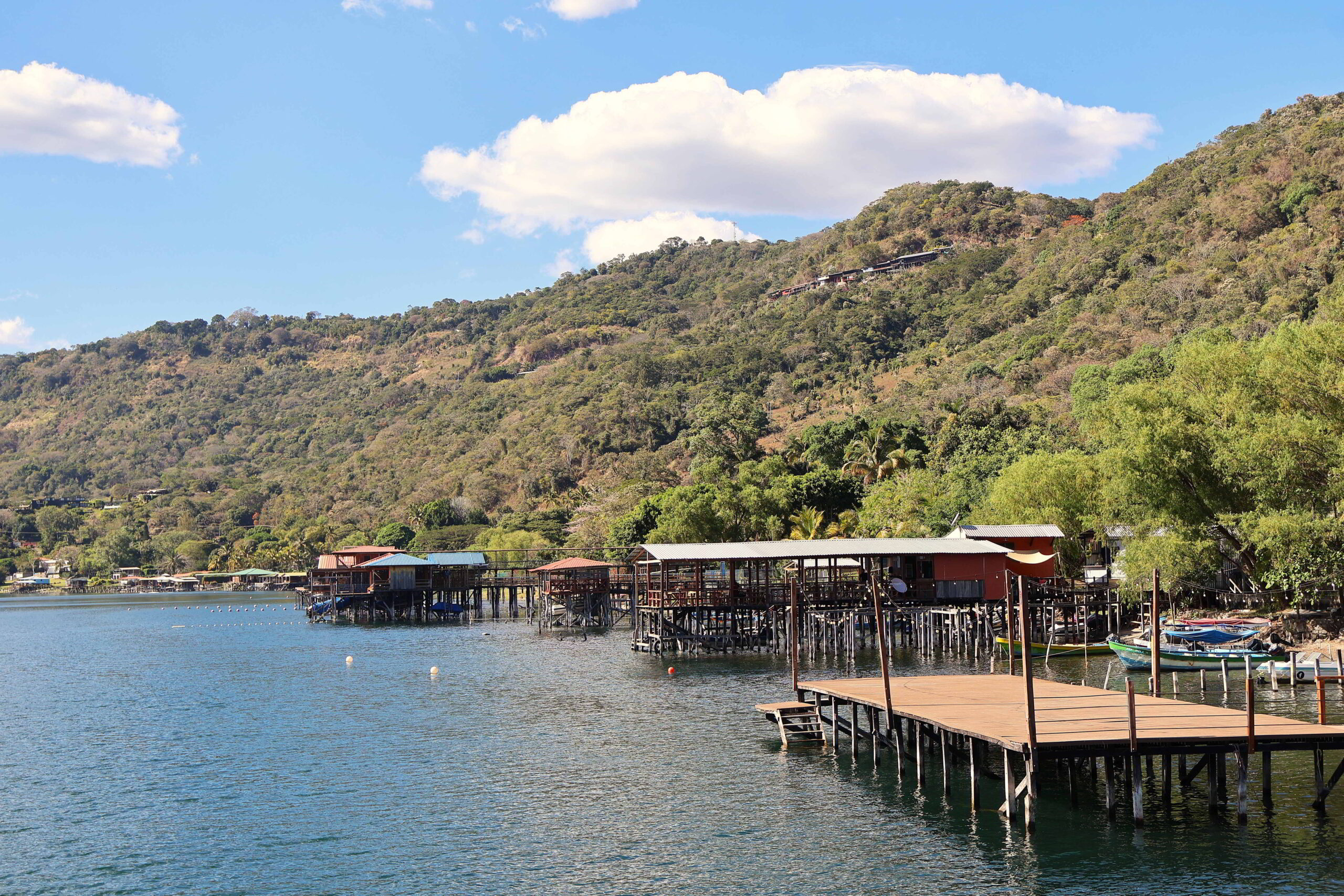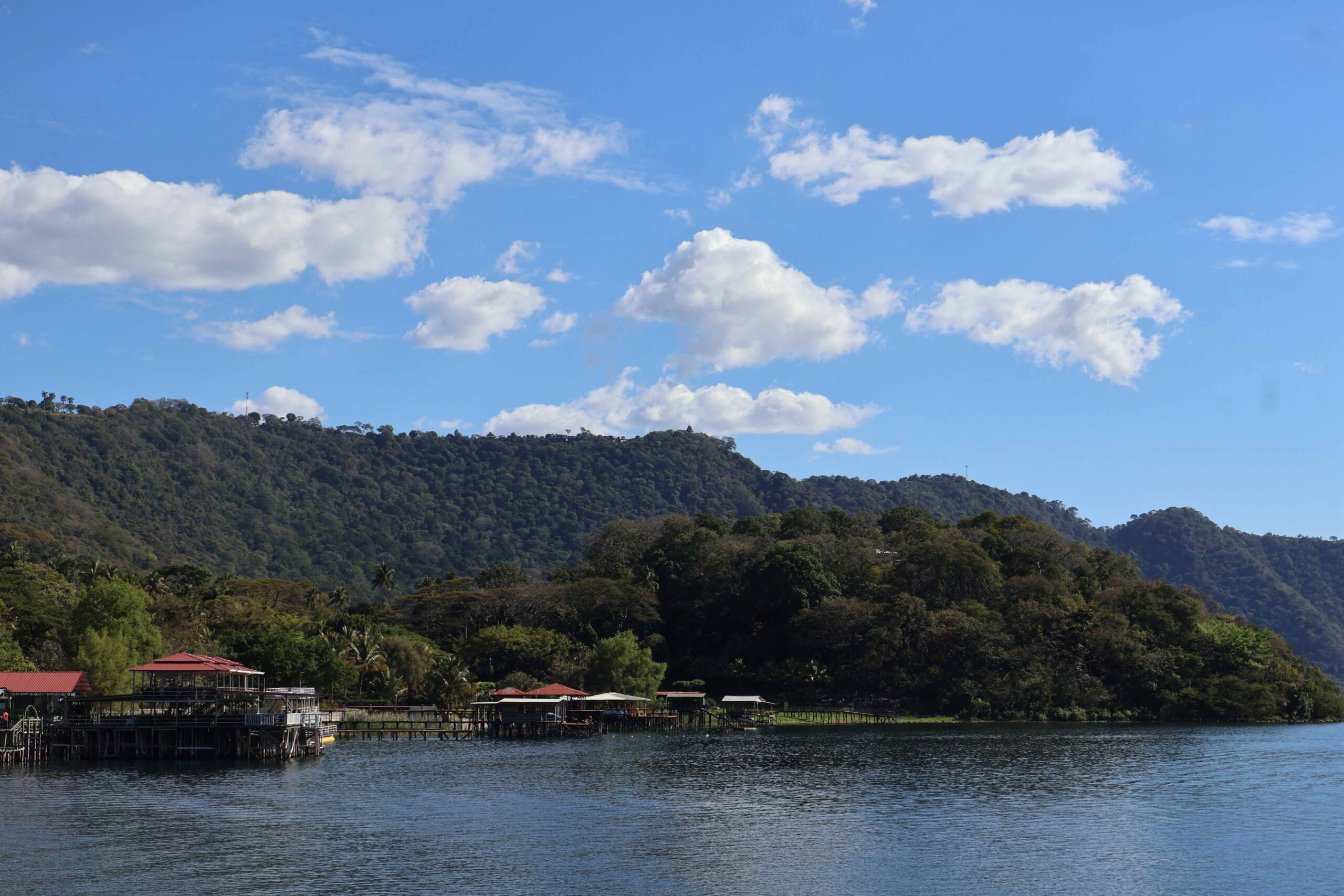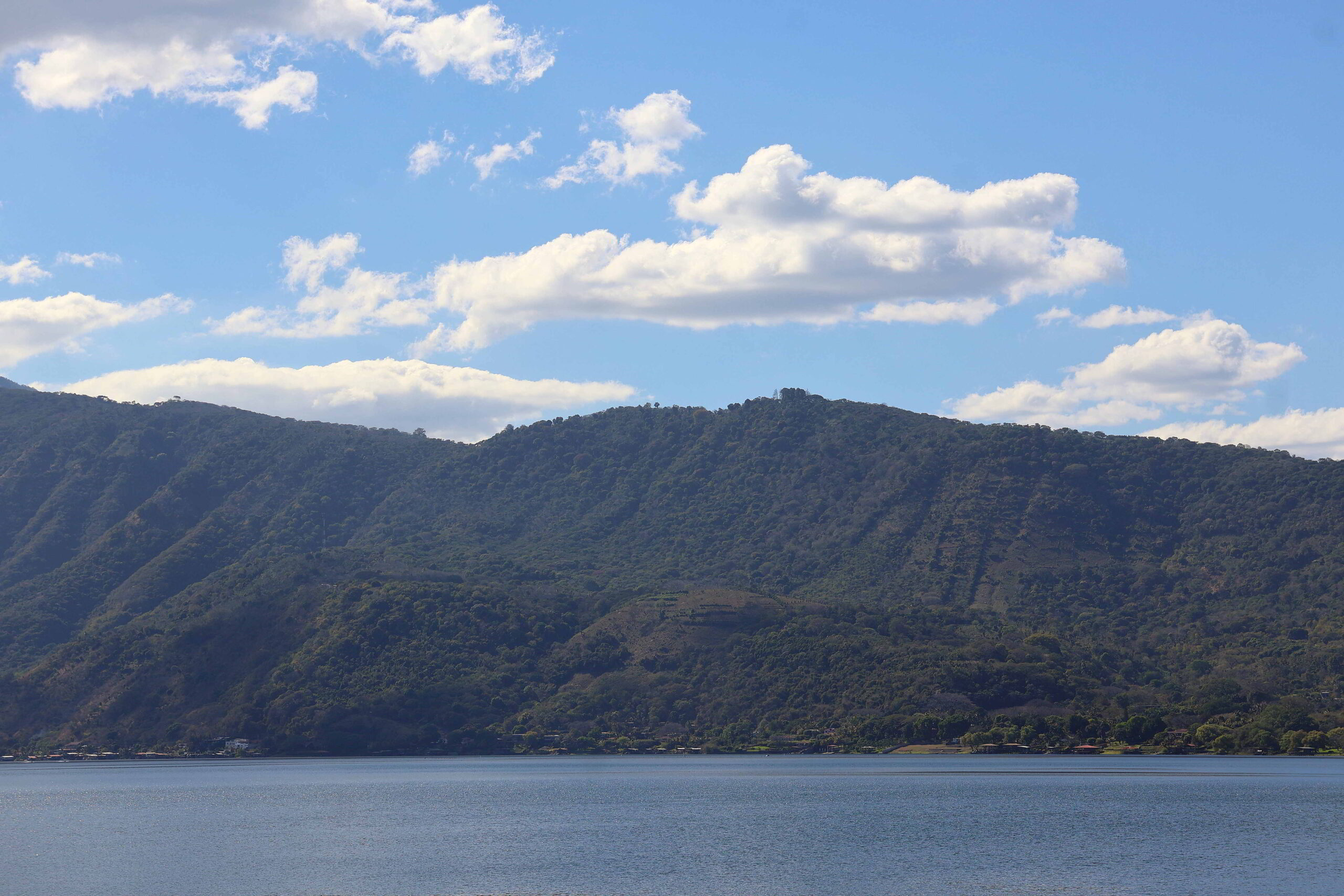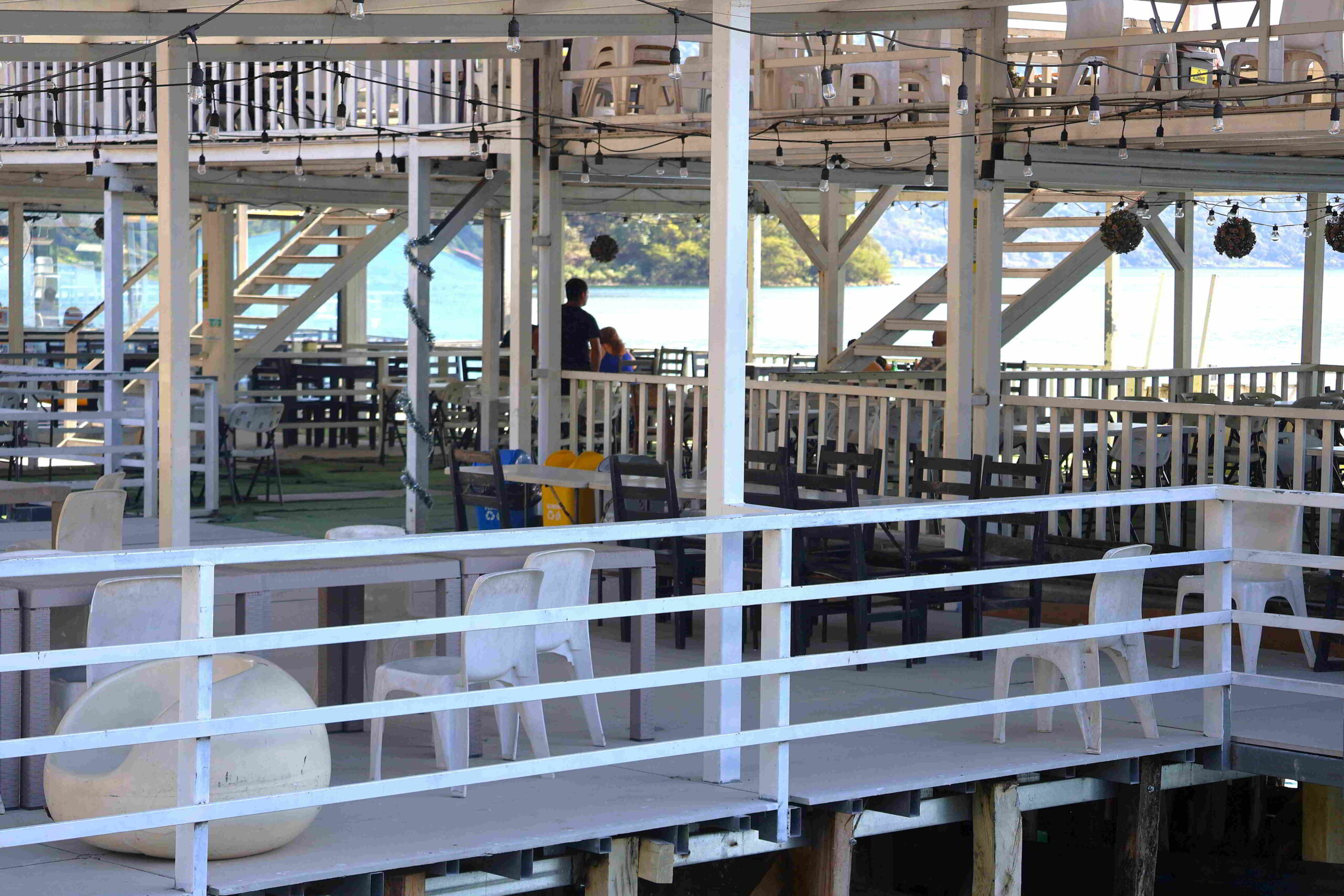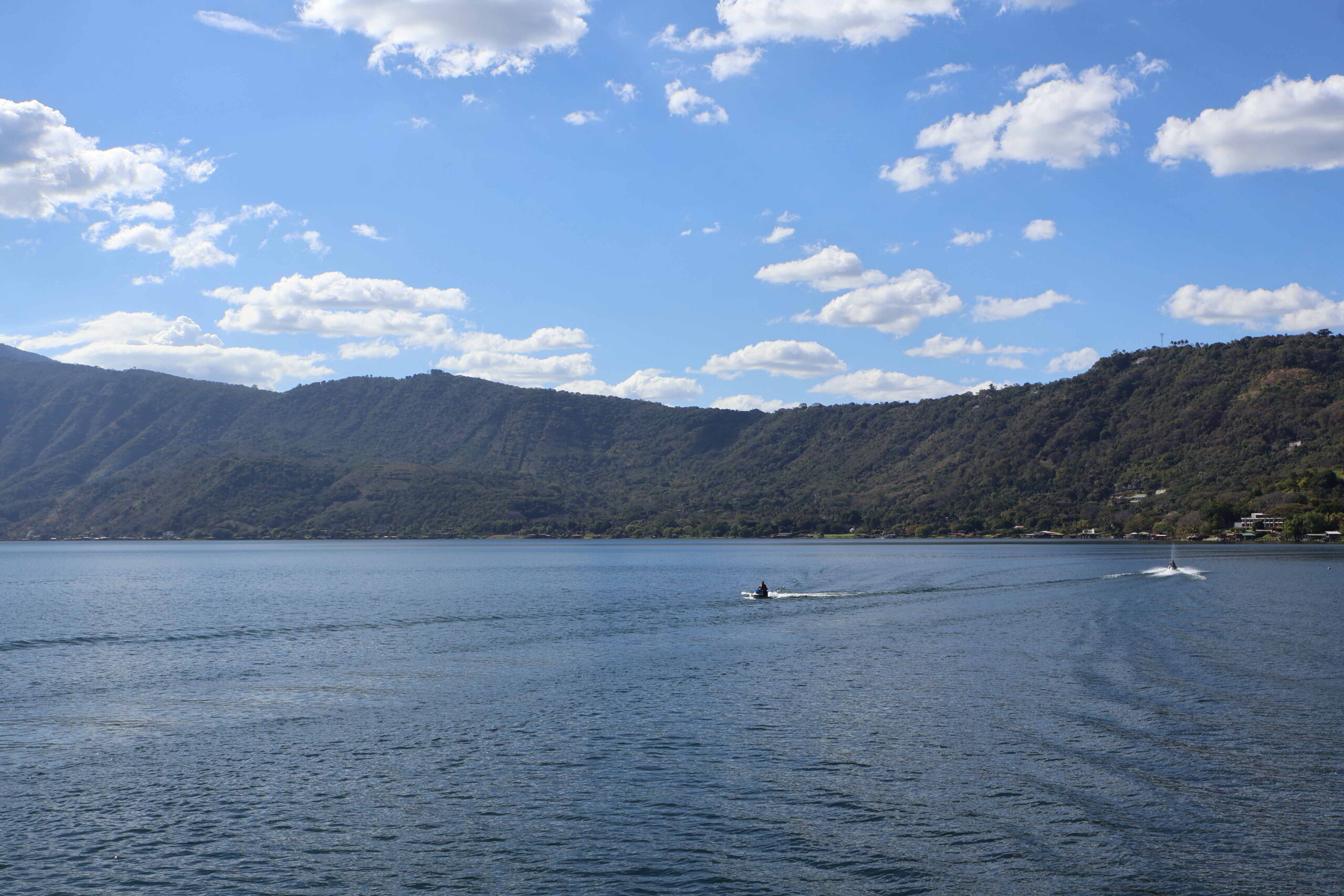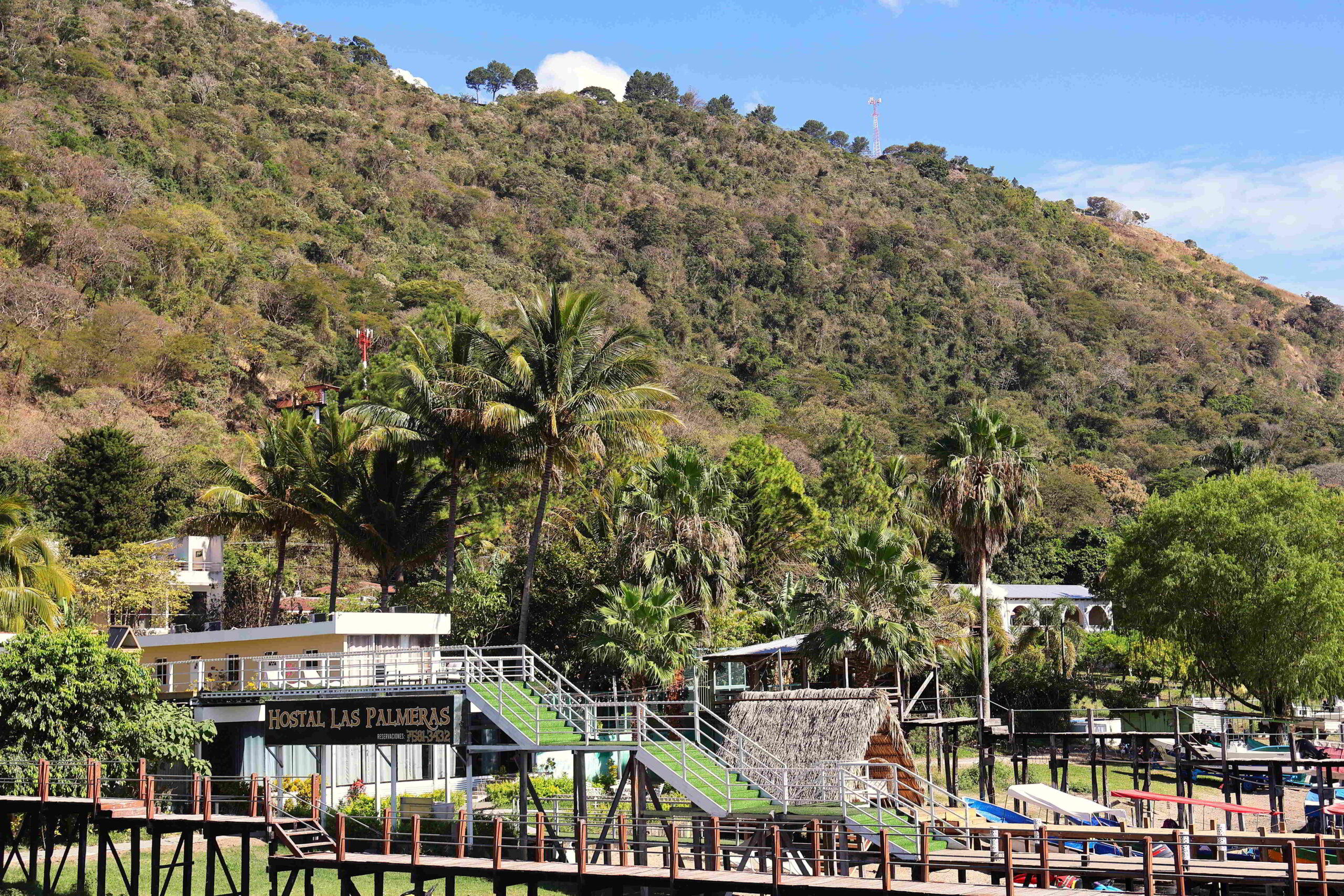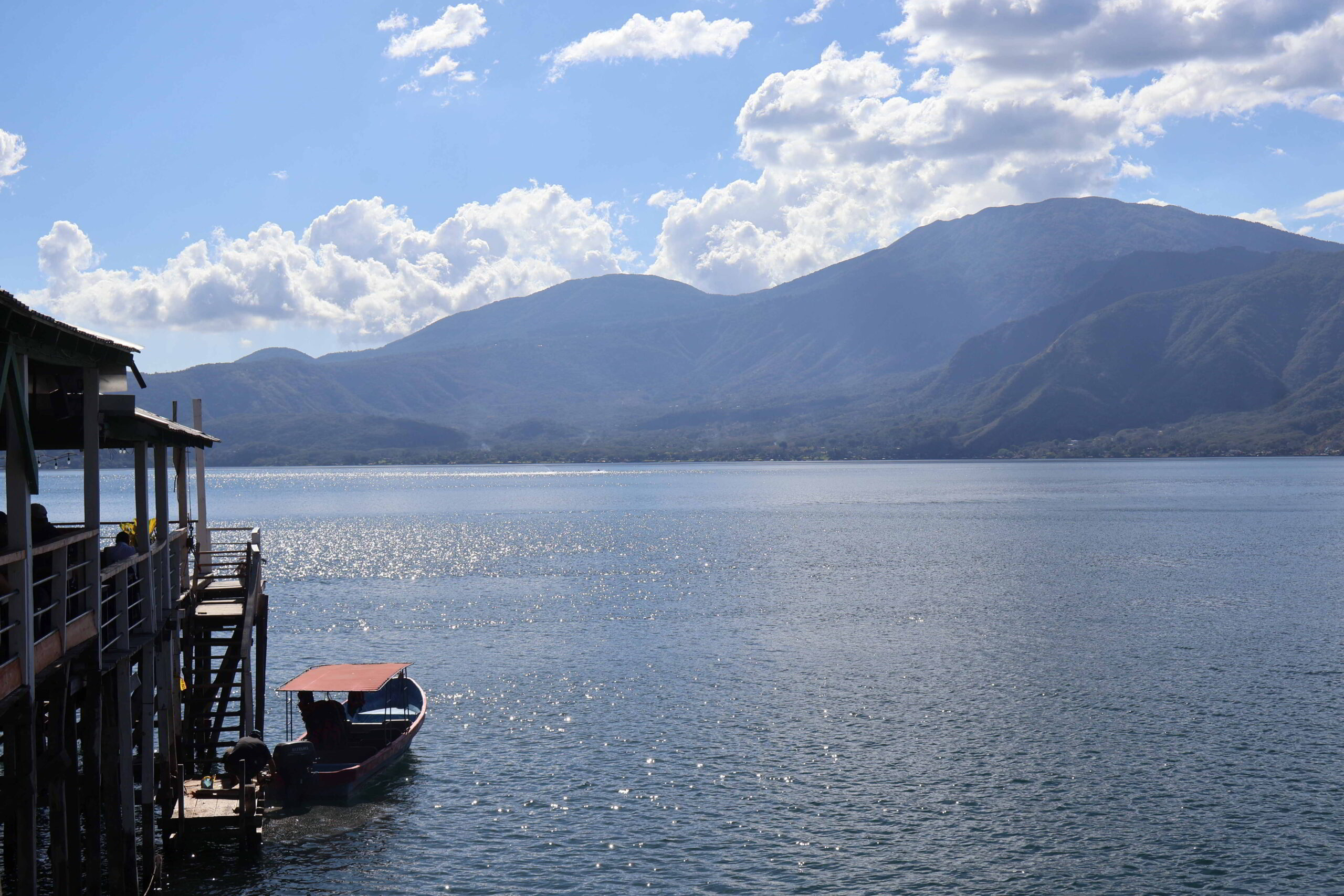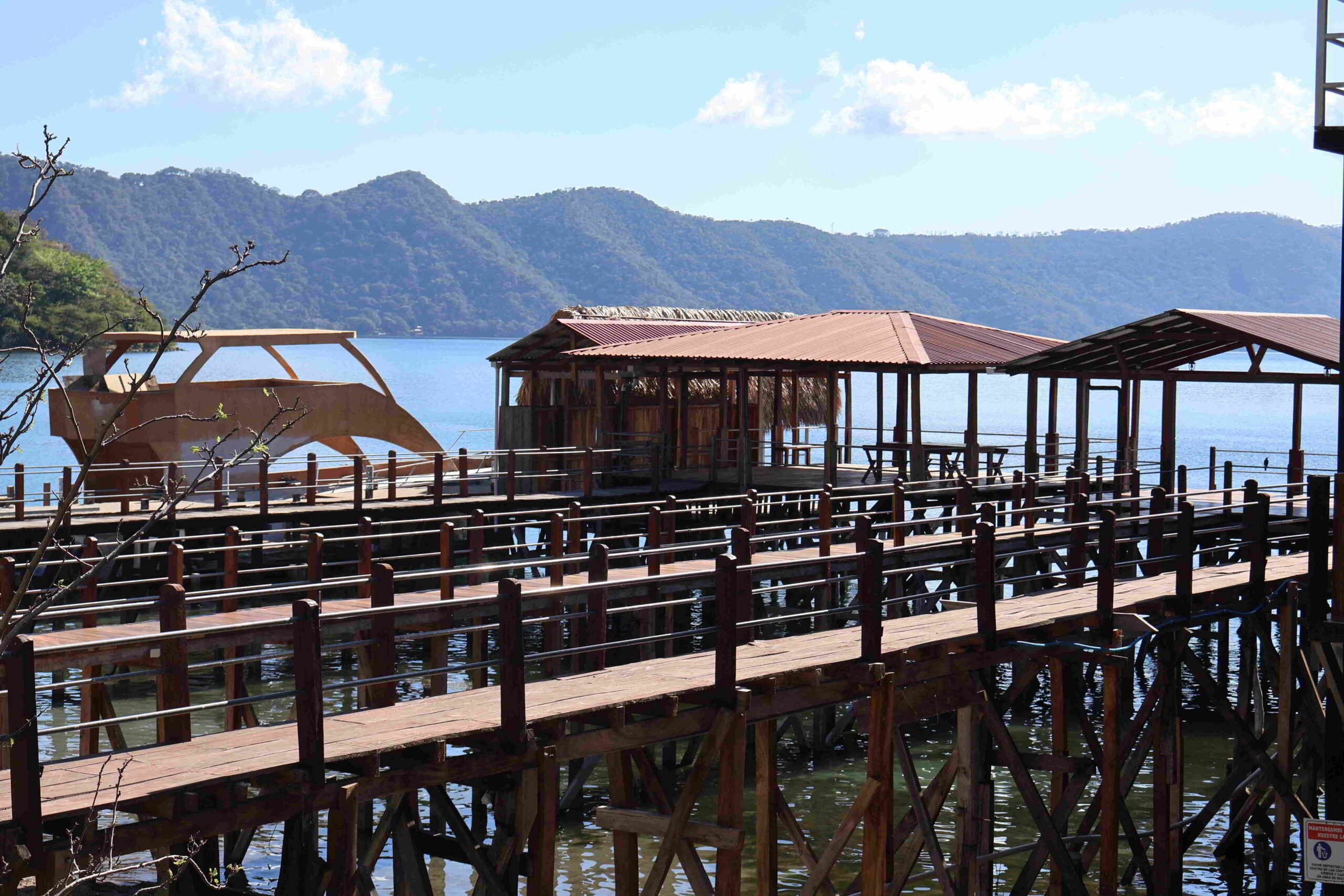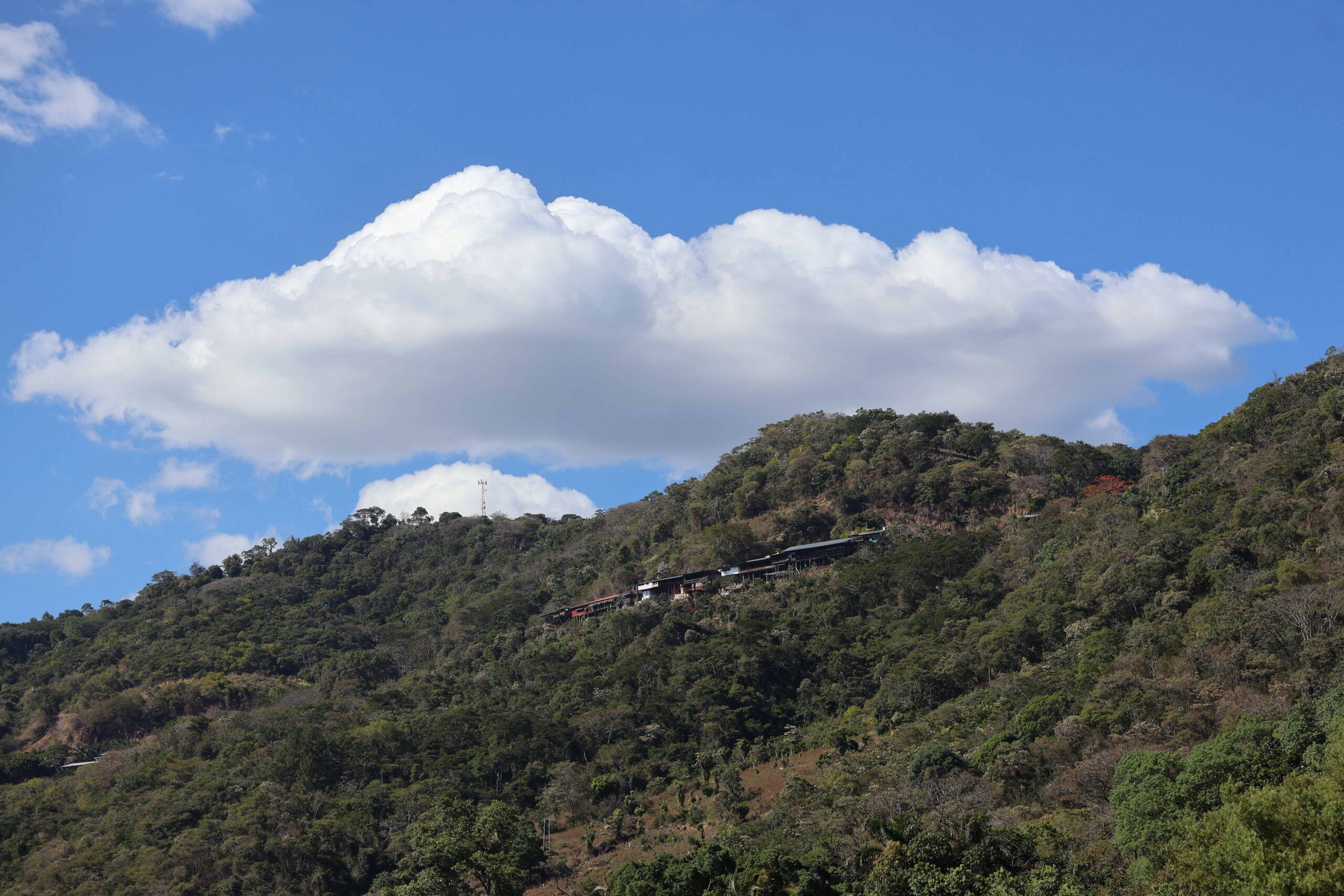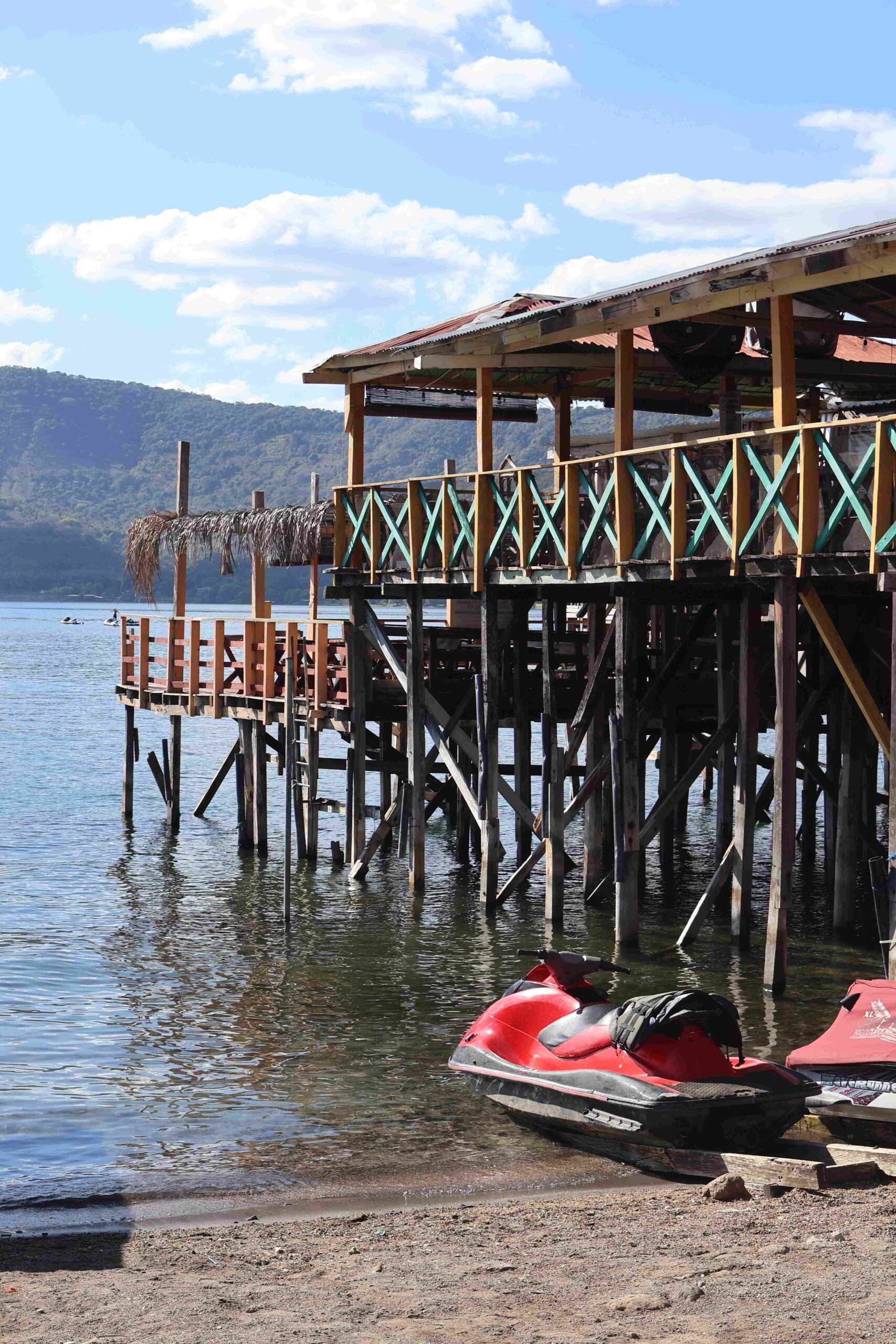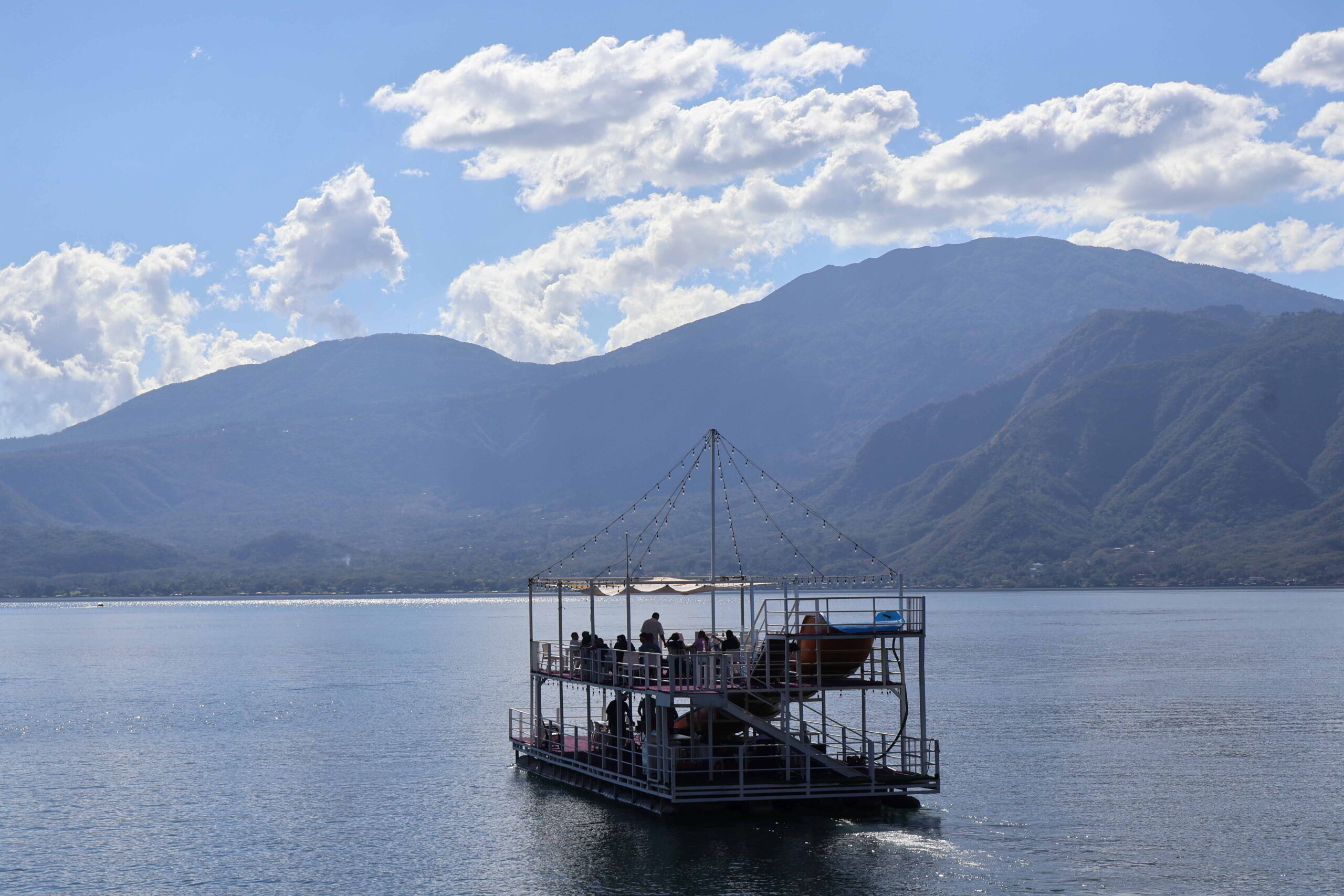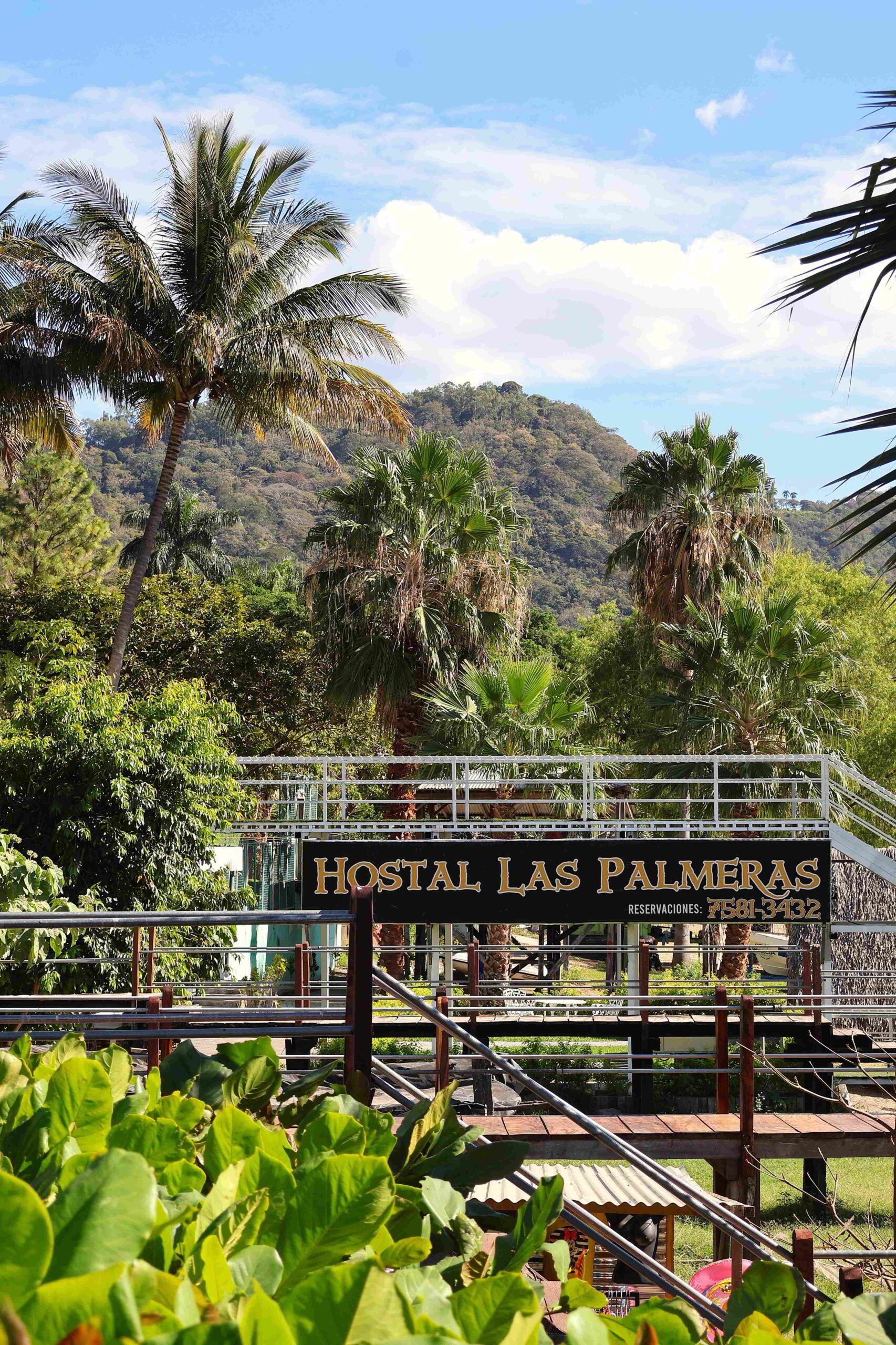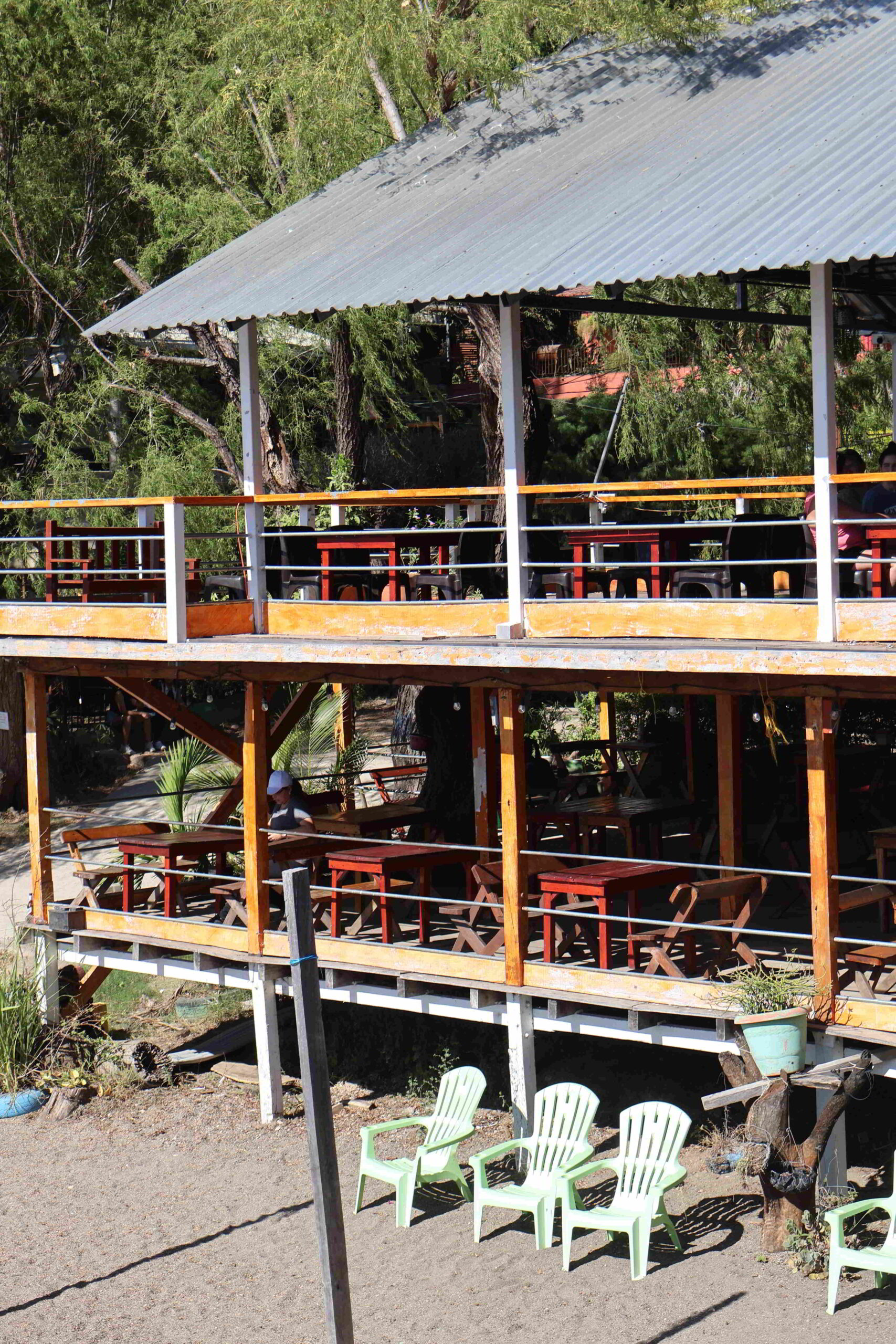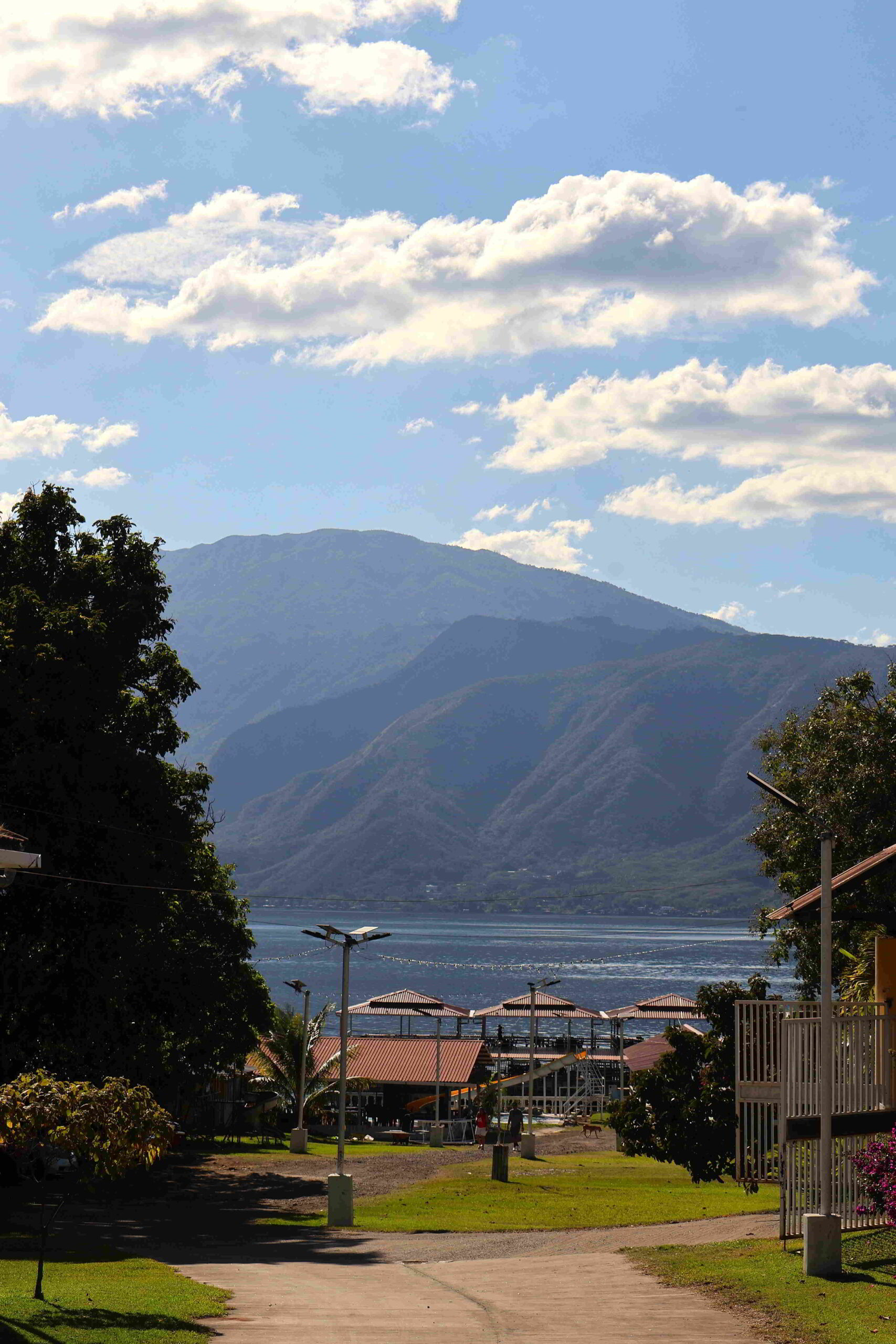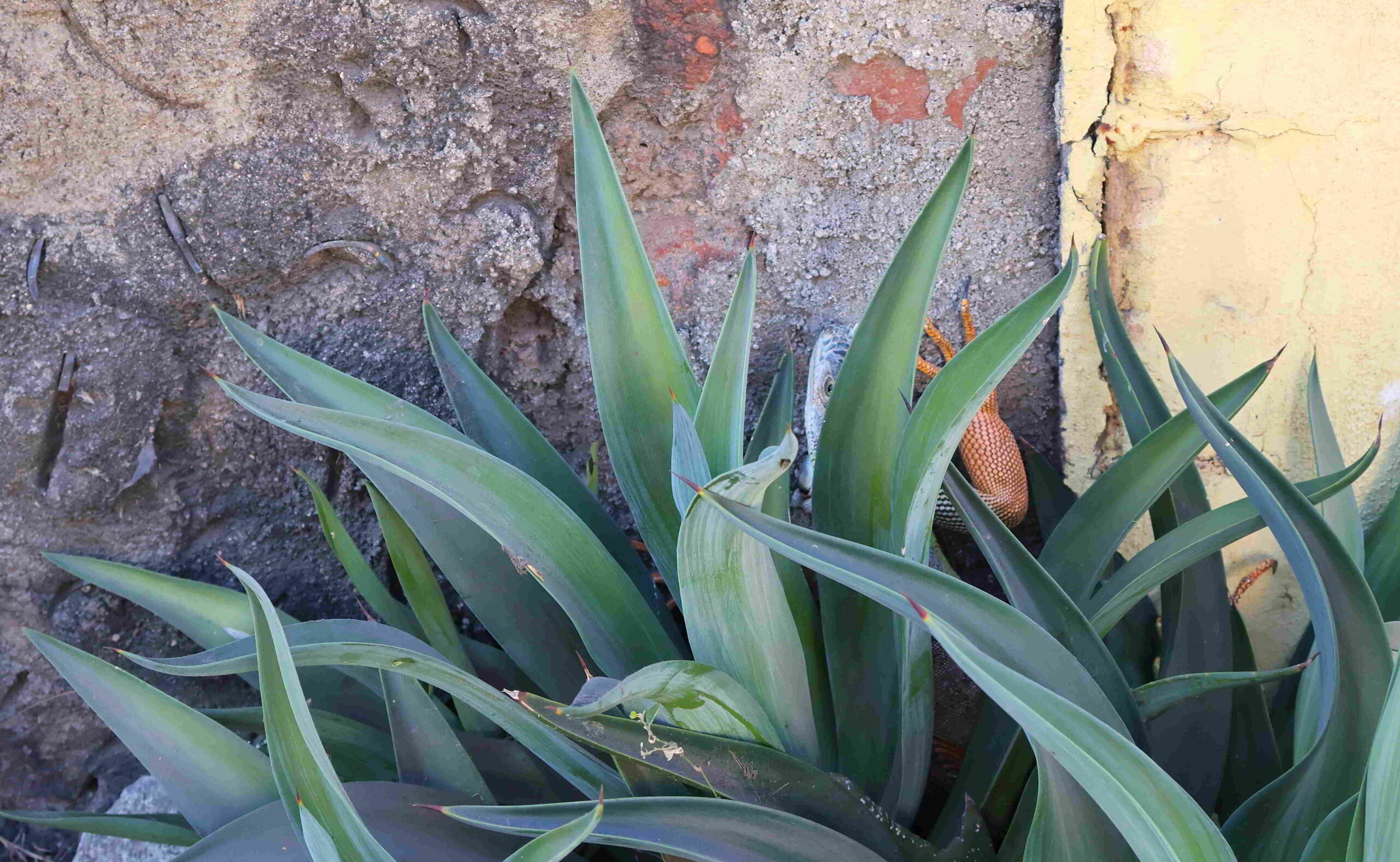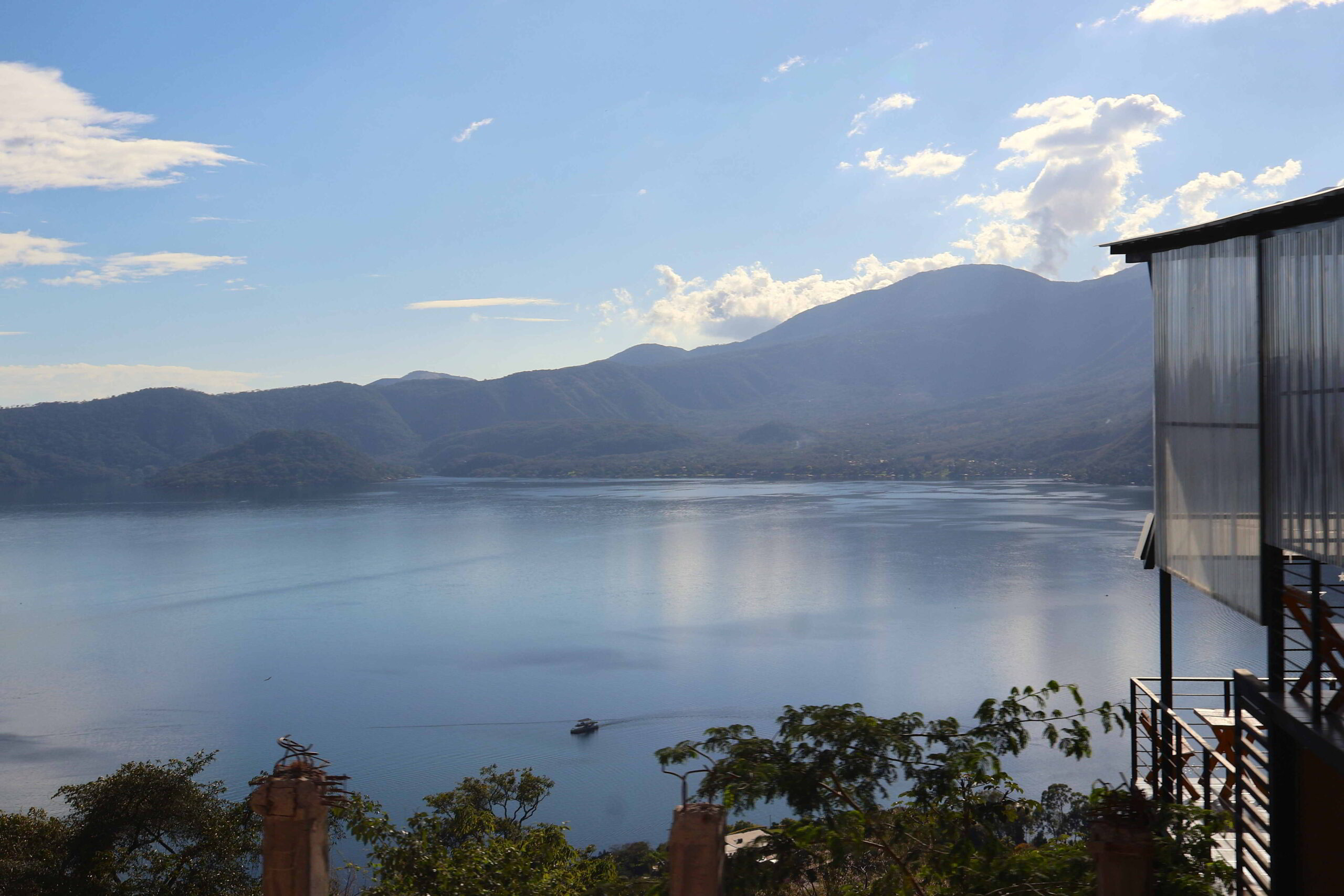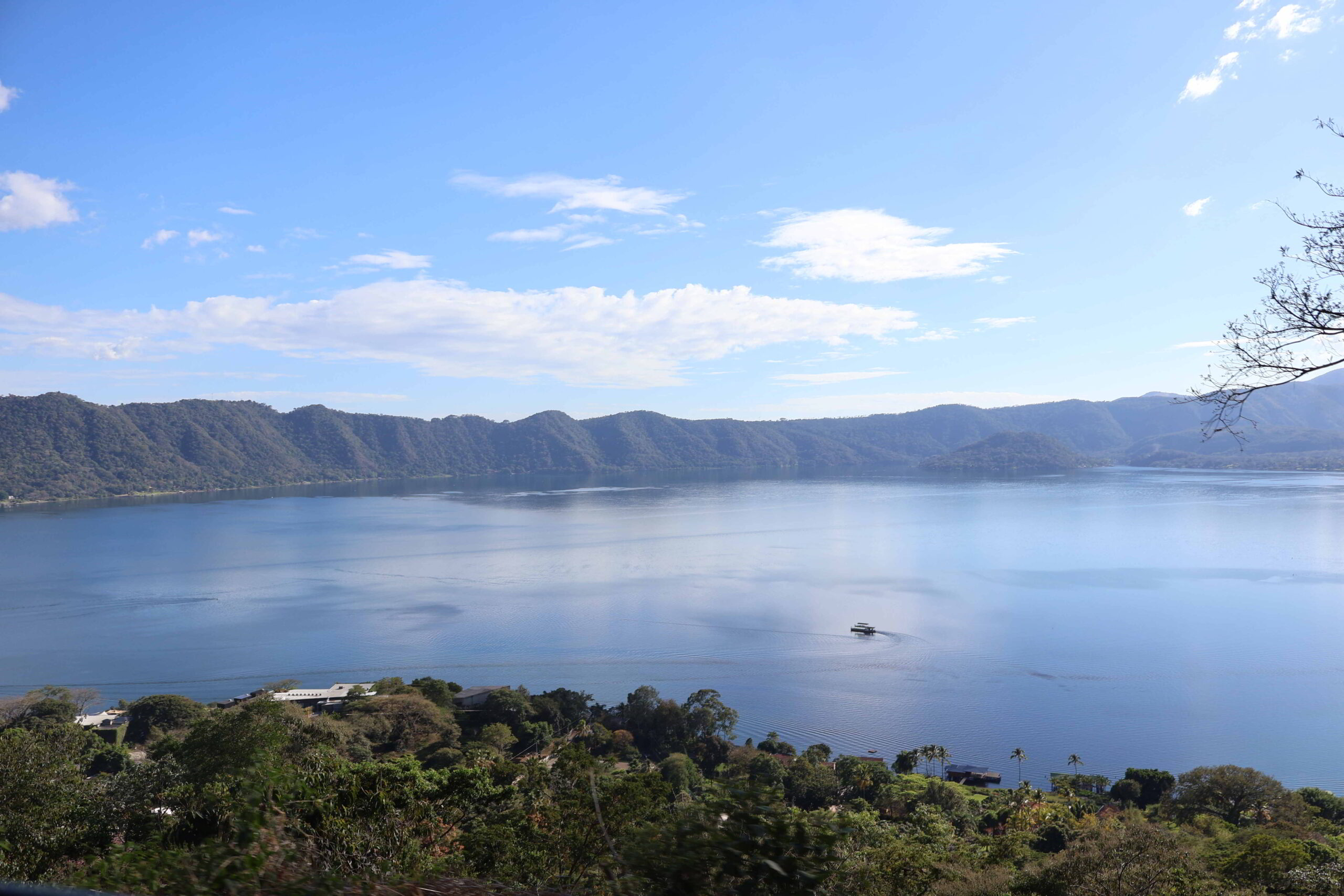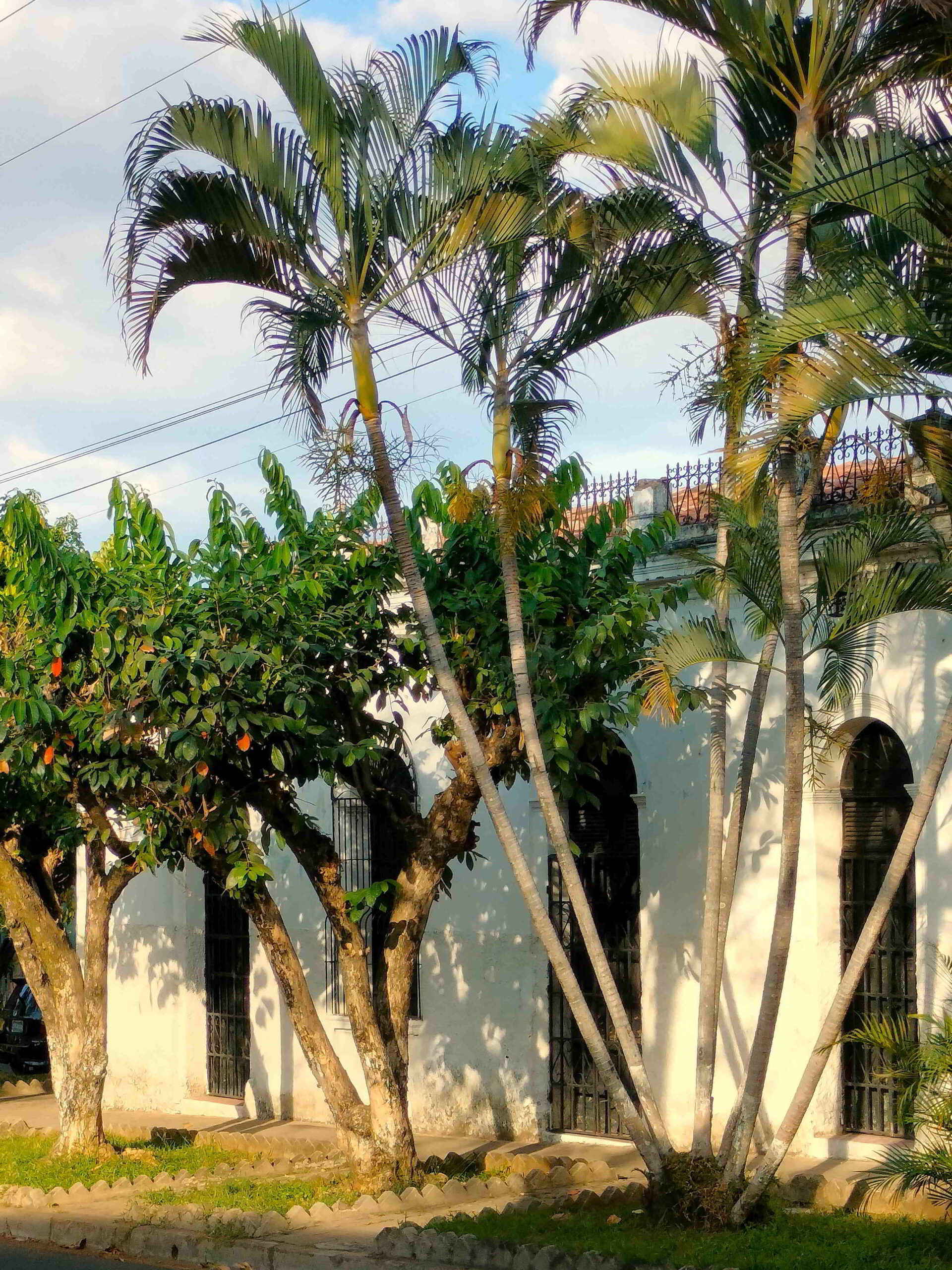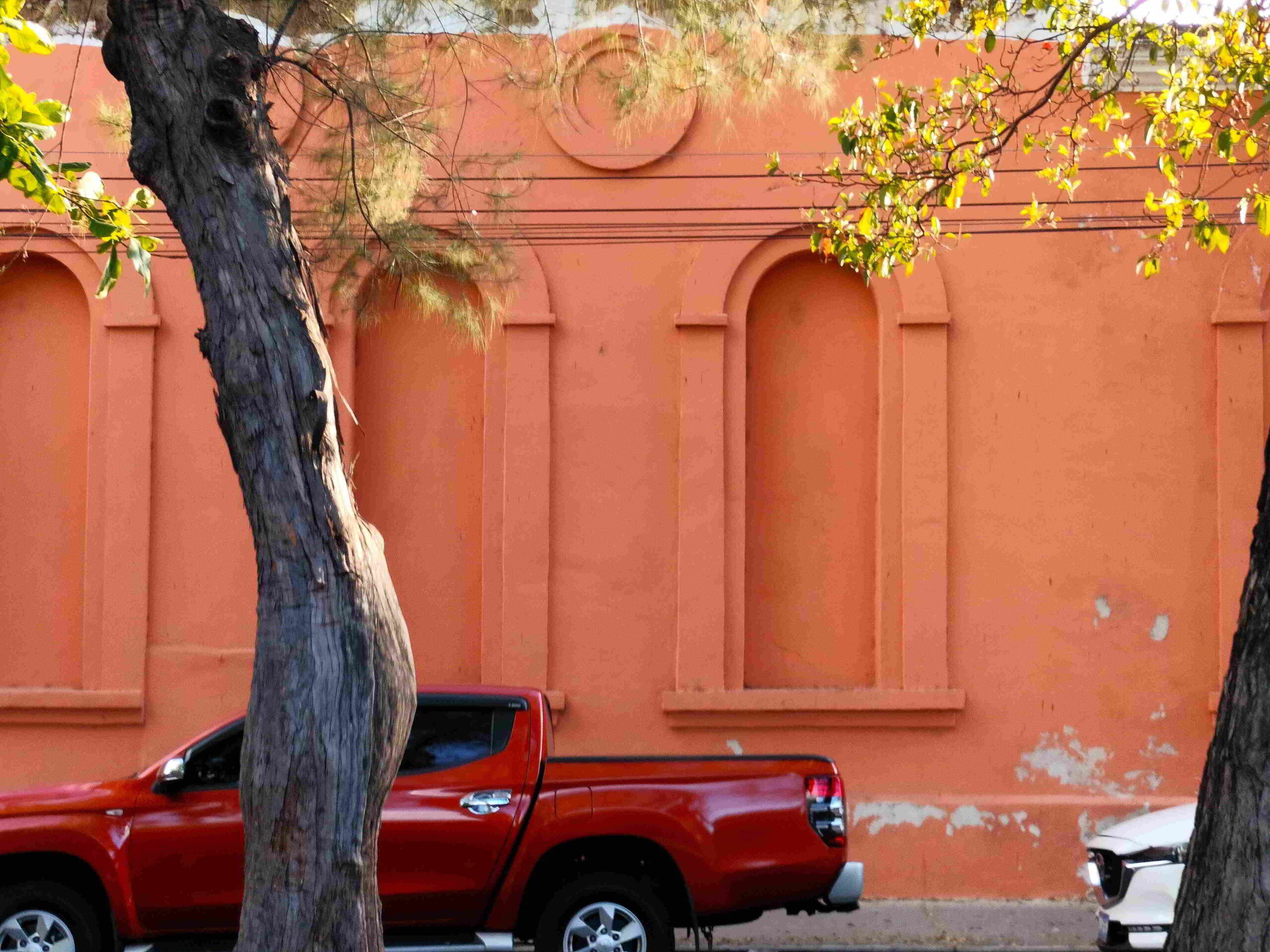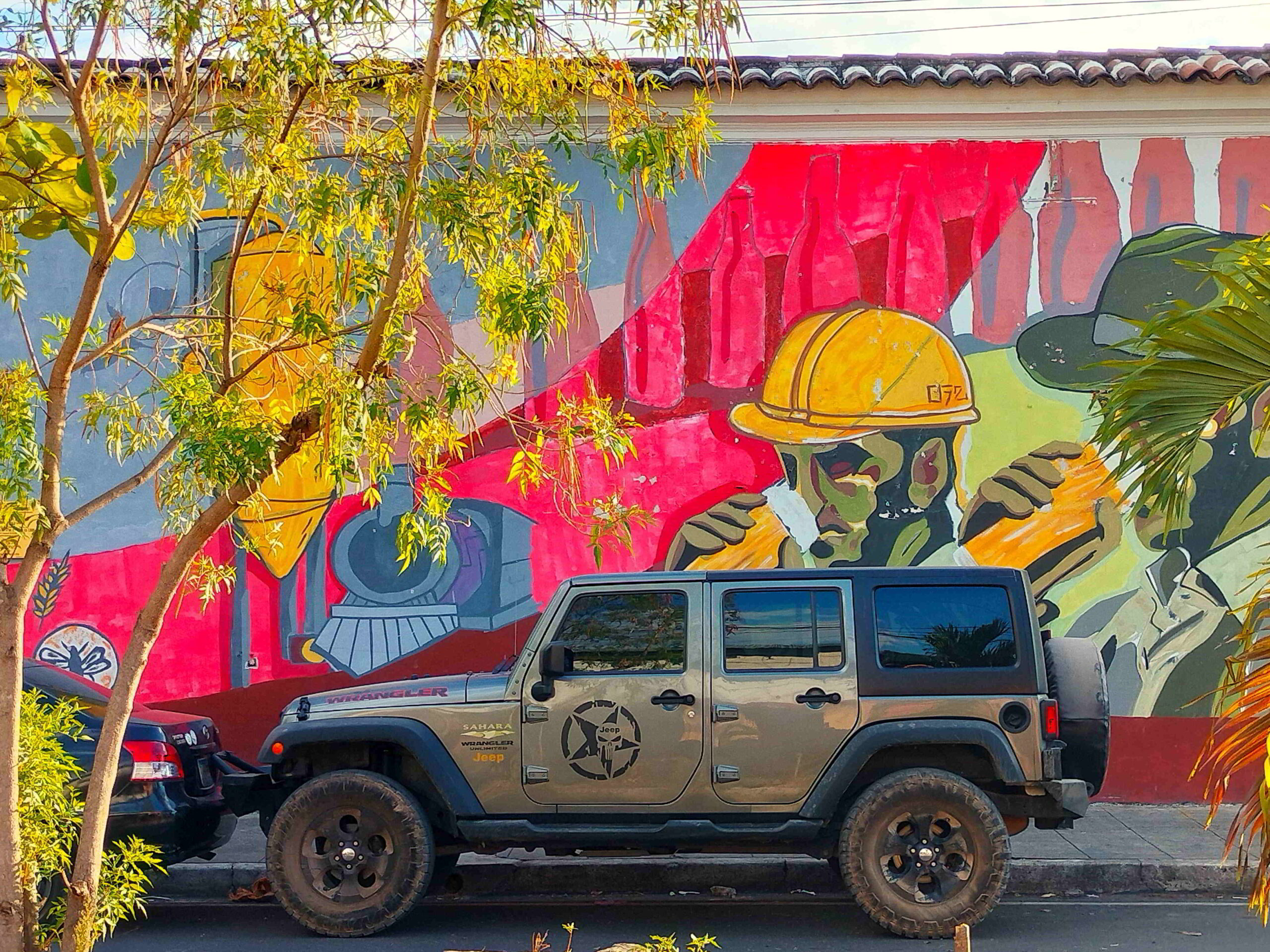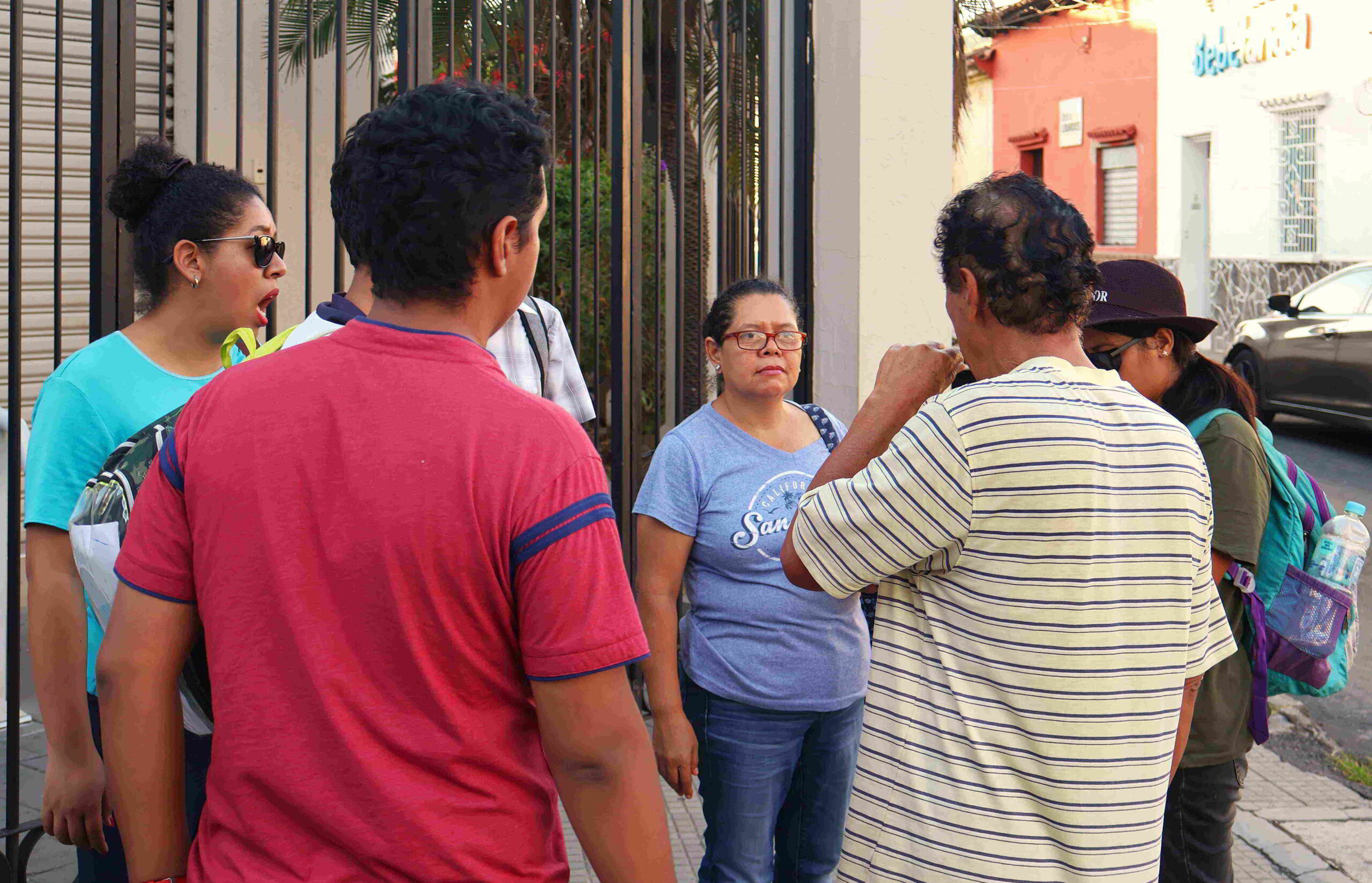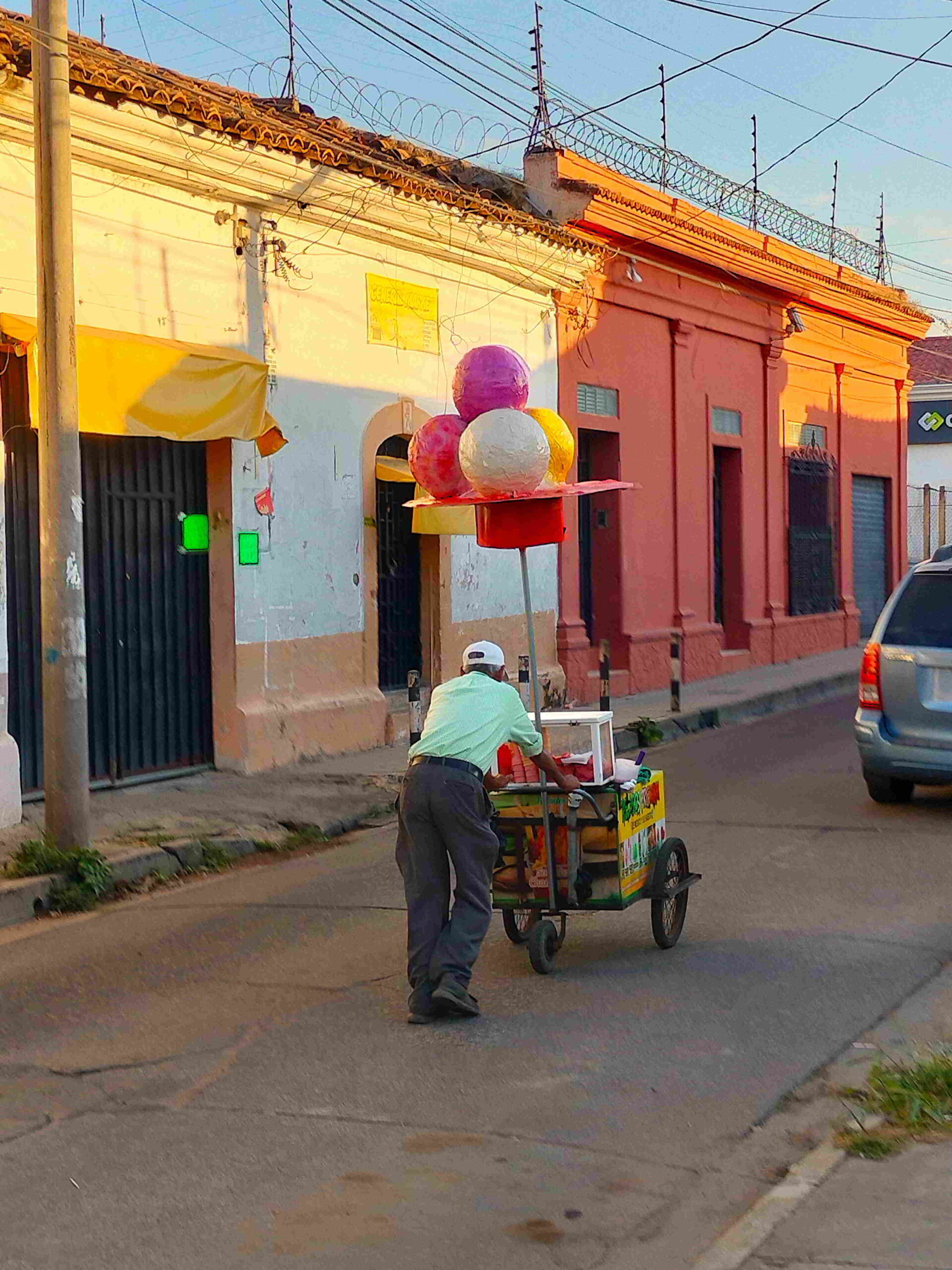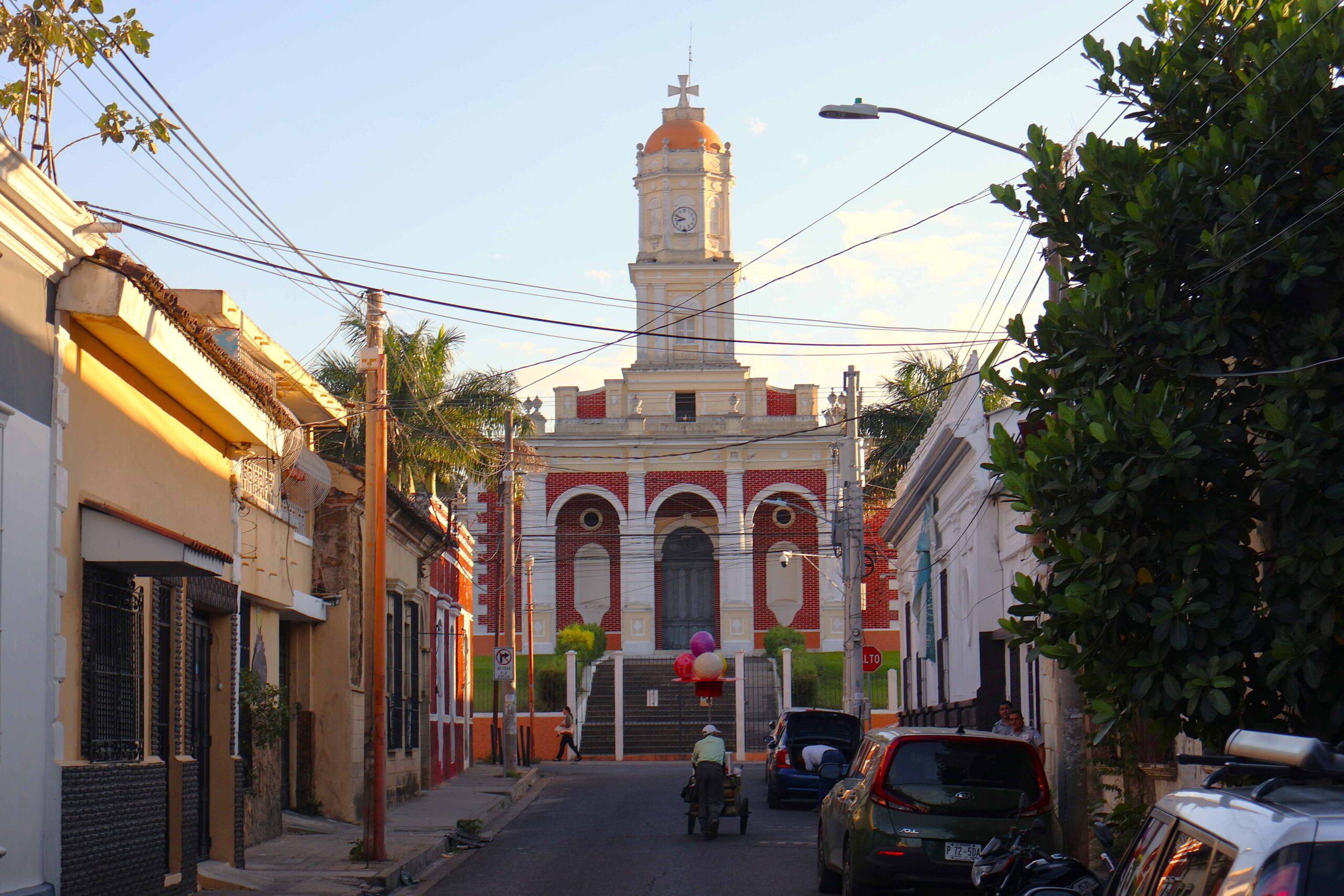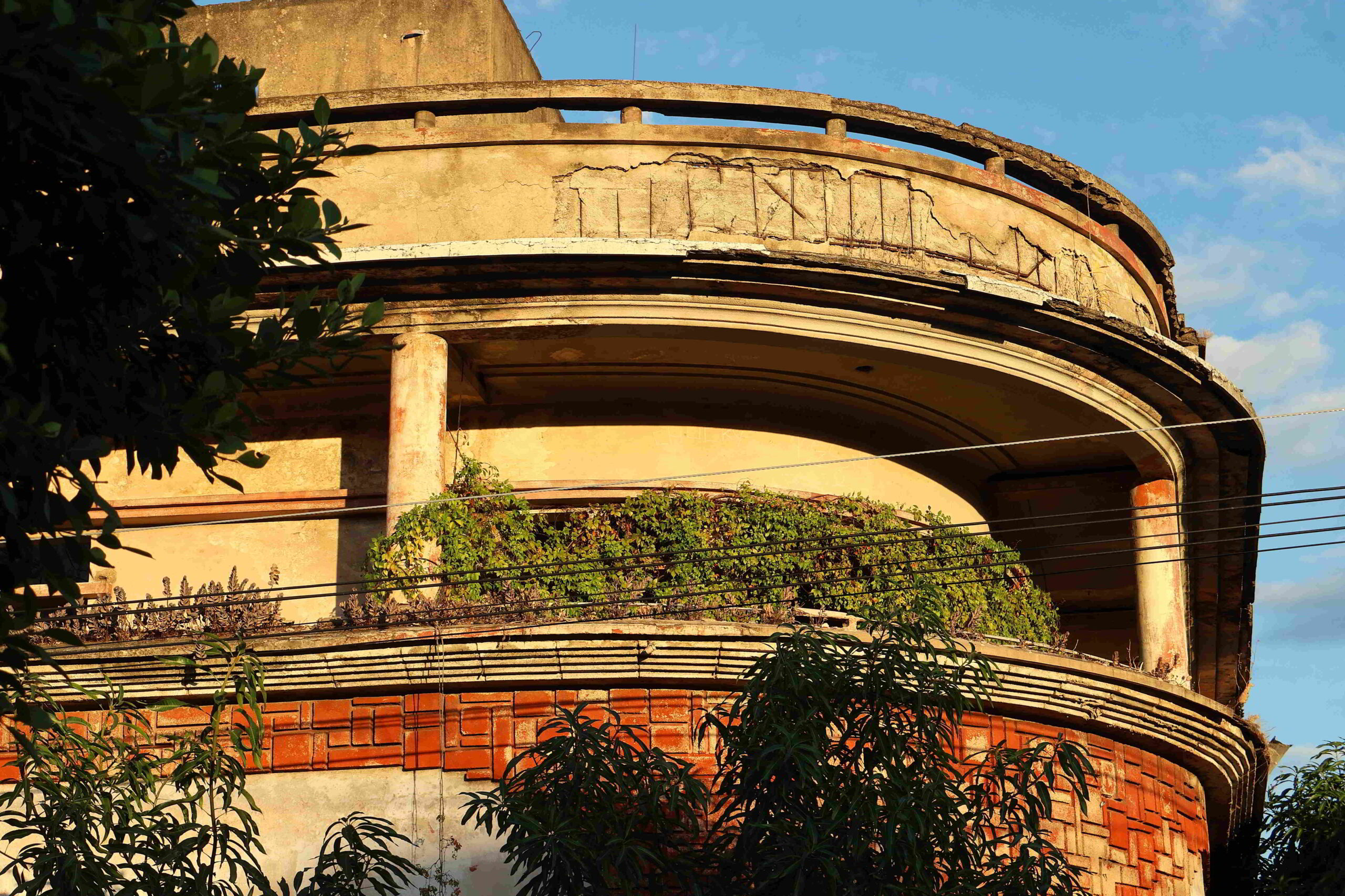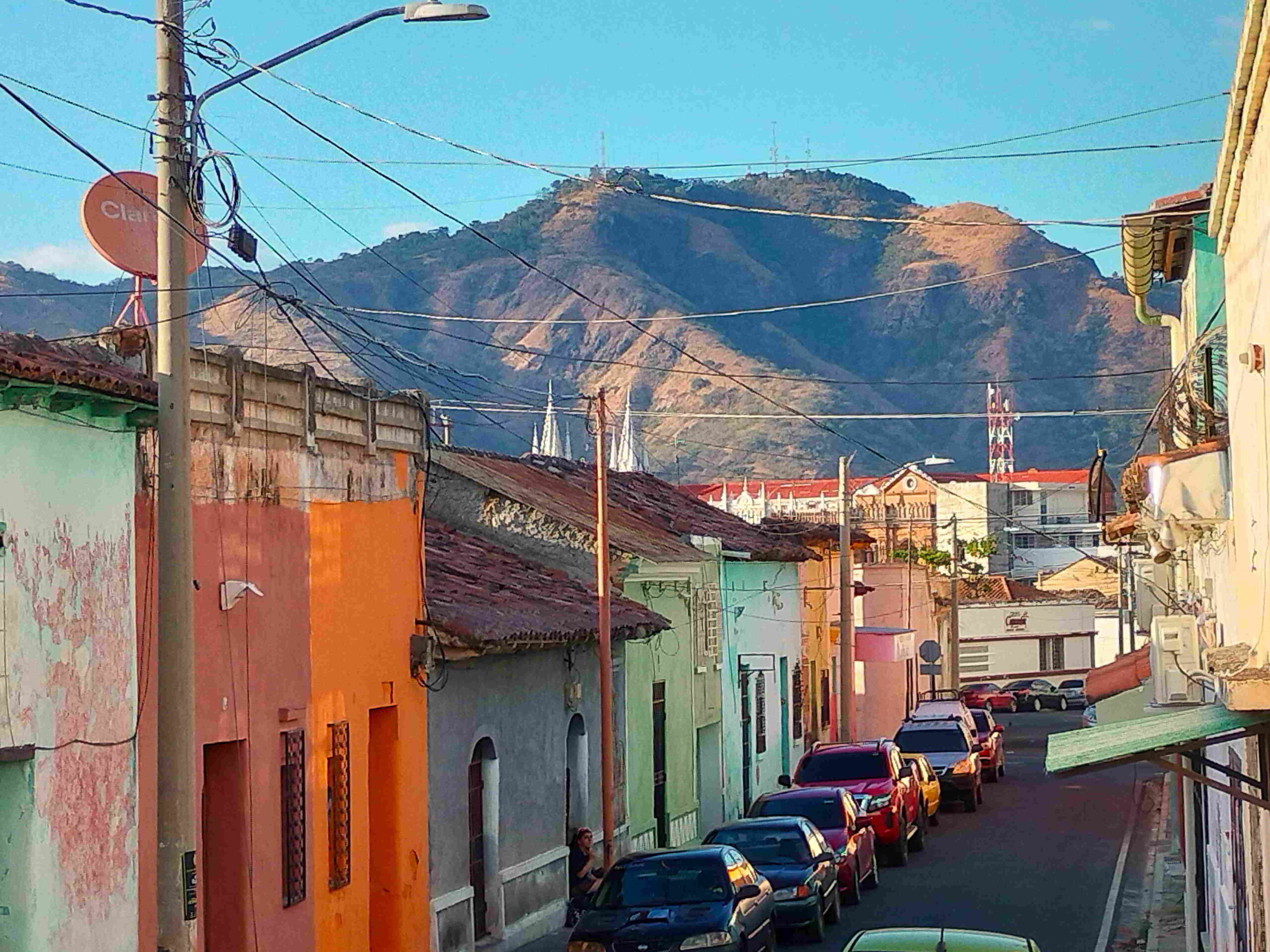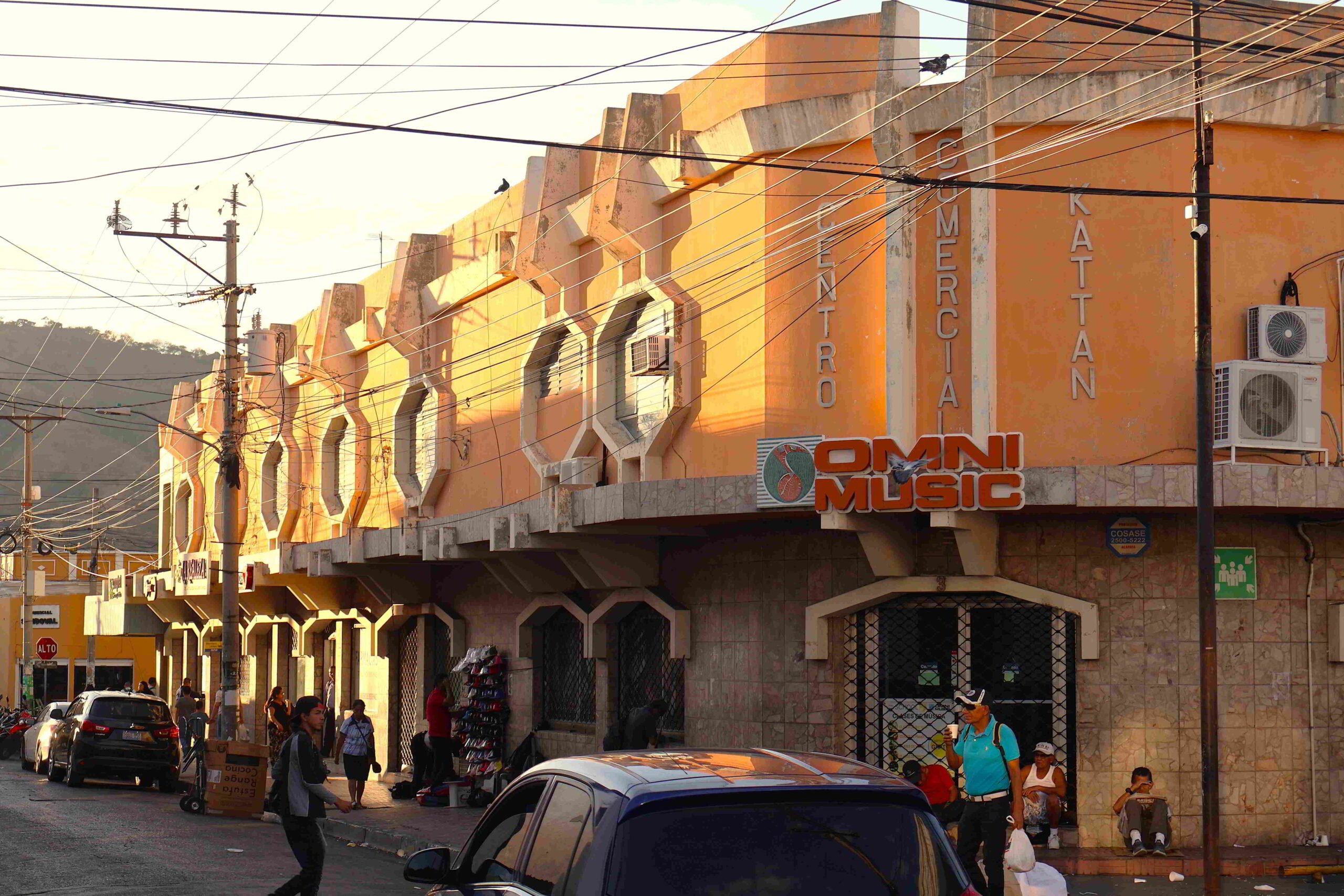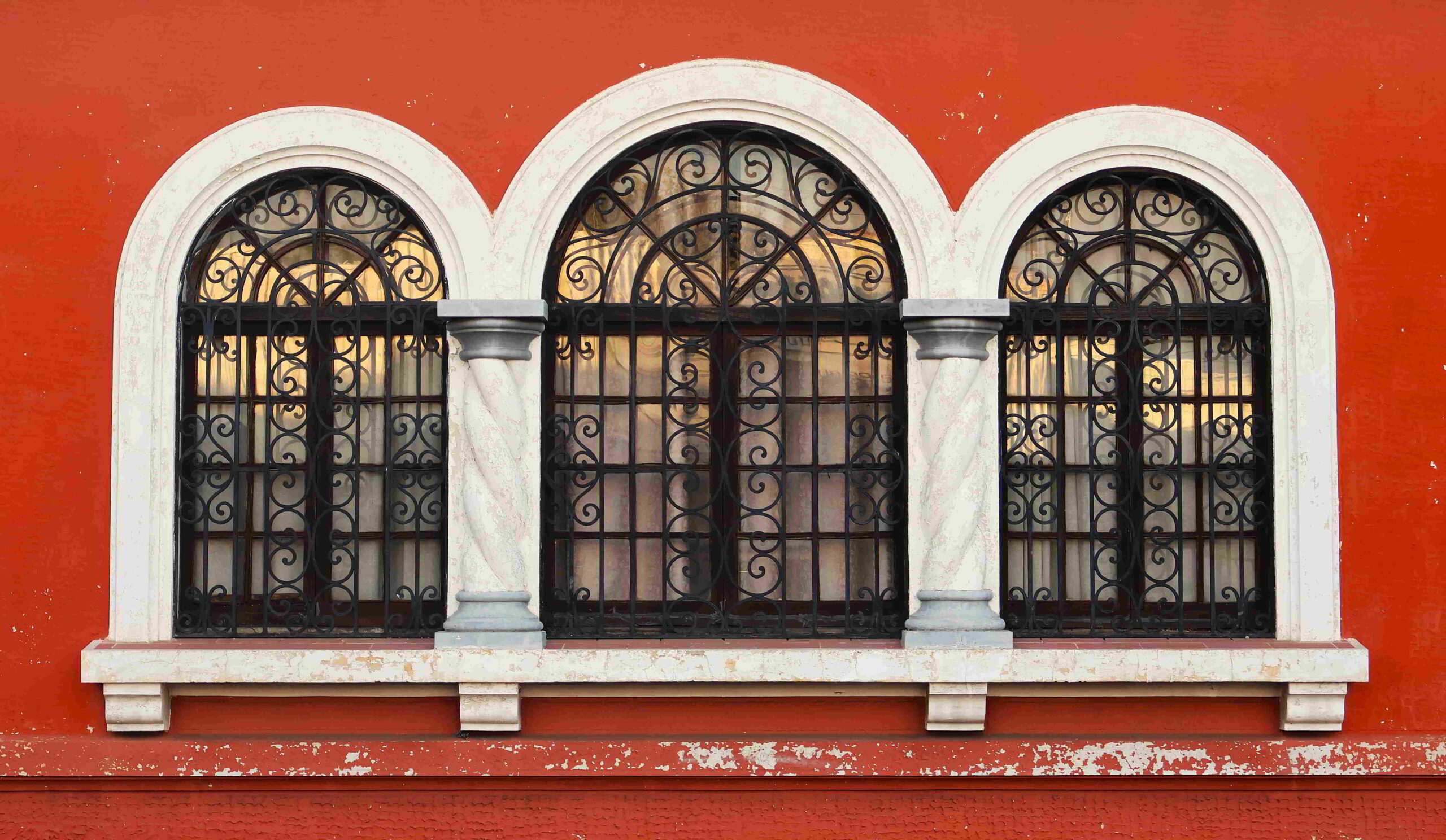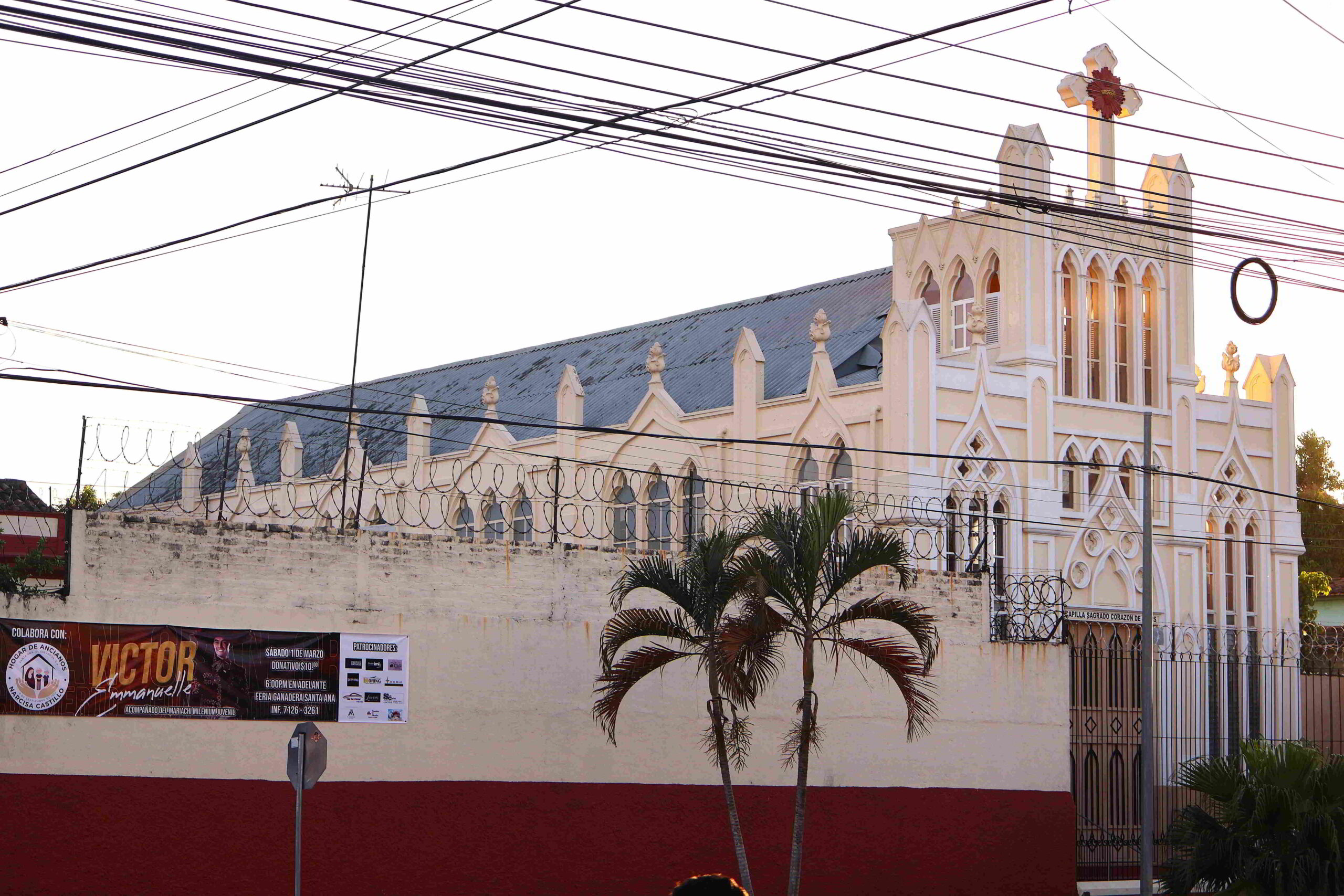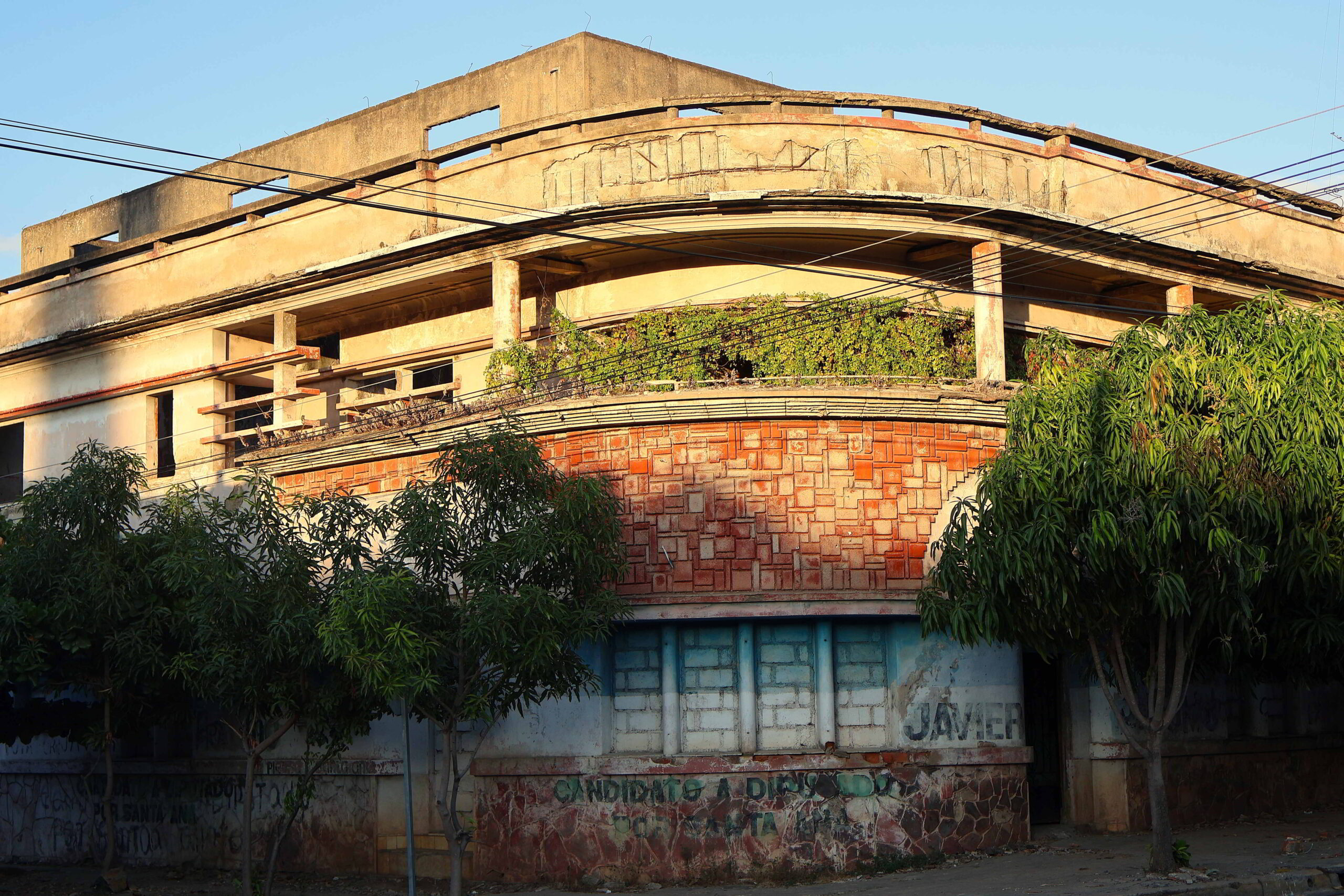February 5, 2025
Today’s destination is Lago de Coatepeque, the scenic lake to the south of Santa Ana; the volcanoes to the west of the lake are also signature attractions of the area, but will have to wait for another day.
The morning is calm – the blaring music from the neighbors only starts up later in the morning, and I hope to be well underway by then, although due to the usual delays, dealing with personal business, travel planning, preparing for the day, and writing blog content, I end up leaving later than planned, as usual. Irrespective of where I am, I want to begin the day with a comfortable start, waking up in a quiet and private personal space where I can prepare a relatively reasonable and filling breakfast – not that El Salvador doesn’t have great street food.
The walk from the western fringes of the old city takes me from the gates of the condominium complex, past the colourful and well-maintained colonial-style adobe bungalows to the Parque Santa Lucia, beyond which the fray of the urban market unfolds, the inevitable stopover at the Ban Ban, the beaming security guard opening the door, an unneeded espresso and pastry, just because, then the walk north, deeper into the fray of working class Santa Ana, to the Parque Colon, the drunks next to the Cerveceria 24 horas, the small stalls and eateries lining the walkways in the park, the welcoming owners and workers beaming at me as I pass, the ruins of the once regal neoclassical Escuela De Artes, the atmospheric skeleton unfortunately shuttered to visitors, the shaded sidewalk on the adjacent Calle Jose Mariano Mendez lined with wizened locals, staring at me intently from under the brims of their baseball caps cowboy hats.
To the south, the town metamorphoses into an unrepentant sprawl of market, the flurry of people and stands squeezed into the narrow side streets overwhelming to process mentally; even if I wanted to buy something here, there are so many small shacks crammed full of goods and food items to choose from. And sure, the prices may be relatively modest, but not for the impoverished locals, trying to survive by selling a few goods on their watch from the early morning to late evening hours.
My destination is the bus station that services the immediate area of Santa Ana, and from which I anticipate taking a scheduled vehicle to the lake. The bedraggled bus stand may not so many years ago have been a very unlikely place to pull out a camera, but the heavily armed soldiers with impassive faces and dressed in green camouflage assure that there is little risk of anything untoward happening, not that many criminals remain on the prowl in the country, following President Bukele’s draconian incarceration measures.
The colourful chicken bus lumbers from the squalid station ensconced in the market fray, a mosaic of ambulatory vendors flaying all manner of gadgets and snacks to a clientele that may be ample in numbers but limited in funds – although for sheer scope of the informal local gastronomy, this is definitely the place. Emerging from the convoluted market, progress along the local roads isn’t much faster, not until we reach the highway, although we never reach any definitive speed, given the continuous stops.
Closer to the northeast corner of the lake, we branch onto a local road leading to the water, but it isn’t clear to me where exactly the bus heads to. To the north side, it turns out; the nondescript modest residential face of the countryside transforming gradually into something much more picturesque and bucolic in character, what with the larger properties, greater degree of maintenance, and occasional glimpses of the round blue disk of the lake below.
Proceeding past the turnoff to the west of the lake, the dense leafy canopy punctuated by torrents of bougainvillea threatens to engulf us, the road continuing further to the north; seen from the distance, we seem to make little progress relative to the lake itself, until the main road loops back, the bus wending around the tight curve to return eastward, but at a lower elevation. And so the road zig-zags in broad stretches slowly downward toward the lake, but as tantalizingly close as the lake appears, it seems we never approach the shoreline. Perhaps I should ask the driver what the stop closest to the lake may be – and it turns out that we are almost there, before the bus begins its ascent along the serpentine we have just descended on.
I approach the lakeshore to which access seems to be restricted to a few narrow enclaves dominated by open-sided, multi-level structures housing restaurants. There isn’t any open waterfront with beach or landscaped waterfront walkways; the only way of coming close to the water is to walk onto one of the wooden terraces extending onto the water. The lake is visible around us, but the nature of the viewing experience is not what I am looking for, given that it is tied exclusively to consuming something at one of the lakefront restaurants.
I wouldn’t mind eating something at one of the places, but feel resentful that the entire experience of the lake is ruined by the obligation to sit at one of these establishments. Curiously, the outermost portions of the structures built onto the water actually float on pontoons that are detachable from the main buildings, and thanks to boat engines attached to the sides, can detach from the main building and motor onto the lake with guests, offering a fairly unique dining experience.
I trudge back to the road, thinking there must be some alternative access to the lake that has a more natural feeling to it, but no, the entire lakefront is walled off, other than two passageways that lead to narrow strips along the water’s edge, completely dominated by similar multi-level terraces. This is not the kind of environment I wish to spend my time in, driving me back to the edge of the road, and soon thereupon am on a bus returning to Santa Ana. Perhaps there are some other parts of the lake you can access that have a more natural feeling, but this is certainly not what I am looking for.
Across from me, a young local woman who spends her days selling Panama hats to visitors tells me there are other locales along the waterfront that have a more organic feeling – but considering the roads visible on the map and the concomitant lack of public transport to these more obscure spots, it doesn’t effectively amount to much. She assures me that there are also vantage points higher up the road from which I can enjoy great views of the lake – except that it would mean I would have to get off the bus, and then without the benefit of a local, I wouldn’t necessarily know exactly where to proceed to. As we climb along the serpentines prior to reach the main conduit that returns to the highway connecting Santa Ana with San Salvador, these viewing spots become apparent, particularly when the bus slows down to navigate the tight turns.
Evelyn tells me that she is an avid videographer, showing me the clips of local attractions she has composed. Being a passionate photographer, it is interesting to compare the cachet and appeal of the two media, a visual capture of continuous action both much more engaging than a still photo, and yet in the paradoxicality of how the brain processes impressions, the photo also requires a greater commitment from the imagination, as it both challenges and yet provide only clues as to how the imagination should respond.
It seems incredible that she can be so creative and independent, but survive from selling hats to visitors on the lake – never mind that she suffers harassment from some of the other vendors, seemingly largely due to the fact that they can get away with making the lives of others difficult. She laments the rapacious push for development of the current government, threatening to open mines in the nearby wilderness, and with that imperil the natural ecology that is already so limited in this compact country.
We both disembark on the east side of the centre of Santa Ana, she wanting to get a better sense of some part of the town she had seen, and myself simply because I have enjoyed walking around Santa Ana – and despite having been here yesterday, I can happily do it again. She is initially disconcerted, never having walked here before, the underlying story being that it used to be too dangerous, although that has changed considerably in the last few years.
We admire the coherent architectural sensibilities of this swath of town, brightly painted, single-tone adobe structures hugging the narrow alleys of the town, and as we progress, we can see the pointed spires of the town’s whitewashed cathedral in the distance, framed by the low, gold-tinged hill close by. She wants to eat something or have a coffee, but short of the immediate area of the cathedral, there just doesn’t seem to be too much offering here.
There is a hipster cafe close by, but she is hardly enthralled with coffee. So be it! The place is hardly that inviting, but there are few options for good coffee, and Ban Ban is too far to the west. She is now intent on showing me an abandoned modernist structure that she believes to be nearby that she made a video of, as it must be haunted. She was alone in exploring it, and it left were with strange sensations and nausea. Well – given the country’s history, you perhaps wouldn’t want to delve too far into the histories some of the abandoned buildings around you. We walk further to the south, the breadth of the town’s historic areas quite stunning; in the context of El Salvador, Santa Ana is a known quantity, but for a place that could easily rank with the likes of Puebla in Mexico, it is hardly that known in the larger world.
Finally, we enter into a zone of largely shuttered shops and commercial and administrative buildings hearkening from a later era, pre-Civil War or even much earlier, the low profile of the two-story structure she had raved about inflected with architectural embellishments associated with 1930s Art Deco trends, including the flat surfaces, rounded edges, porthole windows, and shallow decorative ledges. Now abandoned, it provides endless fascination for some with a more aesthetic mindset, such as Evelyn. But all around us are very interesting structures, their faded period prowess complimented by artfully planted rows of trees, hardly something I would have expected in small-town El Salvador.
And she is off to her shared housing situation, not having had a good day, her attempts to sell the fibre Panama hats at the lake frustrated by another vendor who makes her mark by harassing competitors. The woman has attracted many complaints, but the police have resisted taking action against her, since she hasn’t physically aggressed anyone, at least not as of yet.
I return to the centre of town through the mute shuttered landscape of town, owners and workers closing their modest establishments for yet another day, hopefully having earned more than just a pittance to pay for their wages, rent and food. In a grocery store, a somewhat aloof duo of young men from Denmark on their initial foray into Latin America, with their unique perspectives and experiences that I may have made in some earlier period of my life, but now largely uninteresting, as they amount to more than prescribed sites being checked off a list with marginal social engagement.
